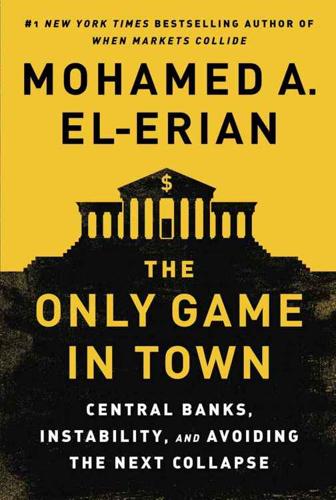
The Only Game in Town: Central Banks, Instability, and Avoiding the Next Collapse
by
Mohamed A. El-Erian
Published 26 Jan 2016
On paper, there are four ways to overcome debt overhangs. The best is through high economic growth, which allows debtors—be they countries, companies, or households—to service and pay off existing debt while also maintaining living standards and investing in their future. But, having let the situation fester for so long, the West does not have this option readily available. Instead, as illustrated by the (albeit extreme) case of Greece, situations of excessive indebtedness can slowly slip into a vicious cycle in which inadequate growth aggravates debt overhangs, while at the same time the expanding overhangs themselves undermine growth further.
…
By taxing creditors and subsidizing debtors through artificially low and repressed interest rates, the financial repression regime that central banks have been imposing can help alleviate debt overhangs. But it takes a long time—a very long time—for such a strategy to make a decisive breakthrough. In the meantime, it risks significant collateral damage and unintended consequences that, among other things, distort growth engines, as we have discussed earlier. A third way to deal with debt overhangs is through unilateral default. This has been tried many times, including by Russia in 1998 and Argentina in 2001. But this approach does not by any stretch of the imagination constitute a silver bullet.
…
During presentations to the annual meetings of the IMF and World Bank in Washington, D.C., she referred to the new-normal phenomenon as the “new mediocre.”10 However one labels it, various explanations have been put forward for this unusual and worrisome phenomenon—from the difficulties of escaping a liquidity trap and the challenging aspects of balance sheet recessions to a change in productivity trends, lack of infrastructure investment, the effects of debt overhangs, demography, and “the race against the machines.” These are all factors that, first, hold actual growth below the potential of the economy, and second, act to pull down future potential growth. There have also been attempts to formalize some of these drivers via comprehensive analytical models of secular stagnation, including by Gauti Eggertsson and Neil Mehrota, who have proposed an insightful New Keynesian overlapping-generations model.11 Drawing on the insights of Alvin Hansen, the distinguished American economist, these two economists illustrate why conventional self-correcting mechanisms can fail in driving a proper recovery.12 It essentially has to do with an oversupply of savings that results from a permanent deleveraging shock, slower population, and an increase in inequality.

The Bankers' New Clothes: What's Wrong With Banking and What to Do About It
by
Anat Admati
and
Martin Hellwig
Published 15 Feb 2013
On the reluctance of banks, sometimes with the collaboration of authorities, to recognize true losses, see also ASC (2012) and BIS (2012). We return to this issue in Chapter 11. 26. Because banks are heavily indebted, any investments they make affect not just their shareholders but also their creditors. This can give rise to a debt overhang effect, which might make shareholders hold back from making investments. The debt overhang effect was introduced in Chapter 3; it is due to the conflicts of interest between borrowers and creditors and creates inefficiencies and possible harm to others. We discuss this issue further in Chapters 9 and 11. EIGHT Paid to Gamble 1. See Patrick Jenkins and Brooke Masters, “Higher Capital Ratios Talk Cuts Banks’ Appeal,” Financial Times, March 27, 2011.
…
See Depository Institutions Deregulation and Monetary Control Act dilution, 28, 175, 306n29. See also debt overhang Dimon, Jamie: on allowing bank failures, 77–78; on Basel III, 194; on blame for financial crisis of 2007-2009, 1, 229nn2–3; as board member of New York Fed, 205, 326n58; on cost of resolution, 78, 264n67; on “fortress balance sheet,” 83, 84, 266n6; on implicit guarantees, 235n30; on level playing field, 236n33; in regulatory capture, 205, 326n58; on risk-weighted assets, 312n63 disciplining effect, of short-term debt of banks, 164, 301n56, 317n83 distortions in markets, 197–98. See also bailouts; debt overhang; externalities; guarantees; risk taking, excessive, in financial distress; subsidies distress, financial, 41–43; in banks, importance of preventing, 81, 171–72; in banks, strategies for preventing, 218–24; in businesses, costs of, 140–42; caution or recklessness in response to, 33, 41–43; covenants and, 141; debt overhang in, 42–43; hidden insolvency and, 54–55, 171; inefficiencies in, 246n18; investment decisions during, 41–43, 246n18.
…
This paper was addressed to professionals involved in the policy debate about banking regulation. Our subsequent experience in this debate suggested that we should try to make the ideas in the paper available to a wider audience. This book is the result. While writing the book, we also did more research with Peter DeMarzo and Paul Pfleiderer, which led to a sequel article, “Debt Overhang and Capital Regulation,” on which the book also draws. Writing a book when one author is located in California and the other in Germany requires not only time but also support for travel and communication. We are grateful to the Stanford Graduate School of Business and the Max Planck Institute for Research on Collective Goods in Bonn for providing this support.
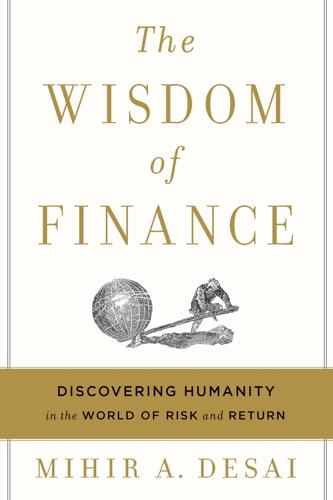
The Wisdom of Finance: Discovering Humanity in the World of Risk and Return
by
Mihir Desai
Published 22 May 2017
The pressure of student loans and mortgages can change the shape of our lives. The commitments of leverage can even preclude you from pursuing the dreams you might have otherwise pursued—mired in student debt, you may ask yourself if you can take on additional commitments to pursue those dreams. That problem is known by the ominous name of “debt overhang.” The idea of debt overhang is that you can prevent yourself from doing things you should do because of the shadow of a preexisting commitment. Think of a homeowner who buys a $100 home with a mortgage of $80. If that home falls in value to $70, he will be underwater—he owes more than his asset is worth. Now, let’s say he could add an extension to the house that would cost him $25 but would add $30 to the value of the house.
…
Really—one has to ask oneself—what dignity is there in that?” Leverage is dangerous for two reasons—as we’ll see in the next chapter, it can lead to bankruptcy where the commitments you’ve made become untenable. But the danger of debt overhang is much more general. Negotiating our existing commitments to allow us to take on new ones is the critical life skill that finance highlights. Debt overhang is the manifestation of not being able to renegotiate those commitments to take on new opportunities—and the resulting loss for everyone involved. And Mr. Stevens is the manifestation of the fear that taking on new commitments is inconsistent with preexisting commitments—a belief that leads him to a life of emotional poverty.
…
Robert Levet,” 68–69 Journal of Law and Economics, 115 Joyce, James, 91–92, 161 Jura, 128 K Kafka, Franz, 47 Kant, Immanuel, 154–55 Keynes, John Maynard, 51 Kirshner, Julius, 103 Klein, Francesca, 101 Koestler, Arthur, 128 Koons, Jeff, xi, 8, 127, 129–31, 137, 140–41 Celebration series, 140 effective use of leverage, 140–41 Play-Doh, 129 Popeye, 141 L Laplace, Pierre-Simon, 20 LeFevre, Gregg, 174 Lehman Brothers insolvency, 147–48 Let’s Make a Deal (TV show), 16 leverage, 8 benefits and drawbacks, 123–26, 135 Bentham and Smith conflict on, 121–22 “bonus” of leverage, 137–38 debt overhang, 132–35 definition, 123–24 leveraged buyout, 127 risk and return, 125–27 static trade-off theory, 126 leverage, personal and artistic, 127–30 commitment device, 131, 137–40 connection to debt overhang, 132–35 degree of leverage, 130–32 effective use, 138–39 failure and rebirth, 149–50 life-cycle hypothesis, 135–36 role of reputation, 139–40 Levin, Jerry, 108–11 Levine, Joseph, 93–94 Little Feat, 99 Luna, Elle, 90–91 M Macfarlane, Alan, 24 Mad Max (film), 54–55 Maltese Falcon, The (Hammett), 11 Mann, Bruce, 143, 145, 147 Mao Zedong, 67 Marcus, Steven, 11 Mars, Kenneth, 93 Mariani, Paul, 33 McNamee, Roger, 108 Melville, Herman, 46–49 Merchant of Venice, The (Shakespeare), 8, 120 (illus.), 122–23 mergers, 8 AOL–Time Warner merger mistakes, 109–12 asymmetric mergers (bolt-on acquisitions), 111 Ford Motor and Firestone Tire partnership, 117–18 General Motors and Fisher Body merger, 113–17 Hewlett Packard and Autonomy acquisition, 109 integration planning, 110 mergers of equals, 111 serial acquirers, 111 synergies, 109–10 Merton, Robert, 40 Miller, Alice, 95 Milton, John, xi, 7, 59, 68–69, 74 “When I Consider How My Light Is Spent,” 70–71 Miracle Worker, The (film, play), 96 Miranda, Lin-Manuel, 75 Molho, Anthony, 103 Monte Dei Paschi di Siena, 100 Monte delle doti, 101–4 “Monty Hall” problem, 16 moral hazard, 28–30 Morris, Robert, 142 career, 143–45 financier of the revolution, 143 relative to J.

The Blockchain Alternative: Rethinking Macroeconomic Policy and Economic Theory
by
Kariappa Bheemaiah
Published 26 Feb 2017
Past and present remnants of events like these can be seen in the form of “ghost towns” that exist in various parts of Ireland, Japan, Spain, and, more recently, China.13 Hence, a system that thrives on credit-financed consumption and directs large investments to the real estate industry, produces cycles of overinvestment, concentrates risk on the debtor, and is intimately linked to wealth inequality. The cycles of overinvestment in real estate irrigated by the issuance of excessive credit thus creates a misallocation of real resources. But the problem is exasperated when the supply of credit is cut, as it occurs in the wake of bust or a crisis. What this leads to is a debt overhang effect. A debt overhang is a debt burden that is so large that a household or entity cannot take on additional debt to finance future projects, even if these projects are profitable enough to enable it to reduce its indebtedness over time (Campbell et al., 2010). Sufi and Mian describe this effect in their book, House of Debt, and so does Danny Dorling in his book, All that is Solid.
…
Hence, the demand side of credit availability becomes the more pressing issue (Koo, 2014), for even if credit is supplied at a low price, the debt overhang effect reduces the demand for credit. When companies cut investment and households reduce spending, government deficits increase as tax revenues fall and social expenditures for the unemployed increase. As a result, the debt that was issued in the private sector increasingly leads to rising public debt. Just as dancers move in gracious circles in a Viennese waltz, the interconnection of financial markets with a sovereign’s economy further metastasizes the effect of the debt overhang and causes it to spread into other sectors of the economy and across other economies.
…
If the bursting of a housing bubble also leads to unemployment for the borrower, the situation is worsened as now there is no source of revenue to manage the debt. This series of events, or others similar to it, are one of the reasons recovery has been slow following the crisis (Jorda et al., 2016). While crises can cause great harm, the debt overhang created by excessive debt issuance can have more long-lasting effects . As house prices fall, those households and companies which are highly leveraged attempt to reduce their debt levels by cutting expenditure and investment. At the same time, the lack of demand for credit causes creditors to also reduce their expenditures.
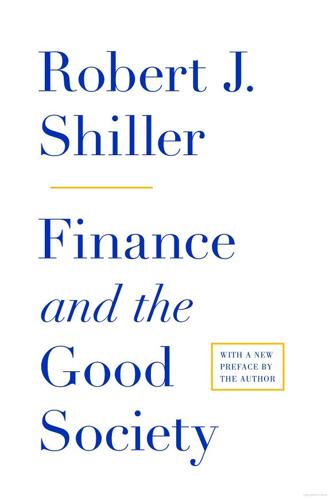
Finance and the Good Society
by
Robert J. Shiller
Published 1 Jan 2012
This change bene ted creditors at the expense of debtors, but the net e ect was negative. The augmented debt overhang led to cutbacks in expenditure that persisted as long as did the overhang problem. Recently economic theorist John Geanakoplos has expanded on Fisher’s theory; he argues that although there has not been signi cant de ation during the severe nancial crisis that began in 2007, the crisis is indeed well thought of as a debt overhang problem.6 When people’s debts exceed their assets, many problems are created for the economy: Geanakoplos lists nine troubling “externalities” caused by the debt overhang. These include troubles in the construction industry, setbacks for small business, rising inequality, loss of productivity, and damage to collateral.7 Thus there is a clear role for government regulation of leverage.
…
There is a sense that “the government” will x any problems that might occur, and a feeling of safety in numbers as millions of people increase their indebtedness. After the boom, during a time of severe debt overhang, there is still a tendency to regard the government as the ultimate savior, and to circle in a holding pattern, hoping for help. The holding pattern itself generates economic distress. The debt overhang problem is remarkably refractory. People, corporations, and governments who have accepted higher leverage in boom times may be unable to rid themselves of its adverse effects for years to come. Evidence for the persistence of a debt overhang problem can be seen in the events that typically follow a change of government in a country.
…
Yet individuals, as well as businesses and governments, often have di culty in fully understanding—at least before a crisis develops—that when they borrow heavily they become leveraged, so that any otherwise small problem becomes magni ed by the debt. If debt becomes too large relative to resources, there is a “debt overhang,” which inhibits any form of positive action. People, and rms and governments as well, feel pinned down by their debt. Few of the individuals presented with this problem have the quantitative skills to understand and resolve the underlying issues without the help of financial advisers. Lenders may step into this situation, hoping to make a pro t, and sometimes with little regard for the real interests of the borrowers.
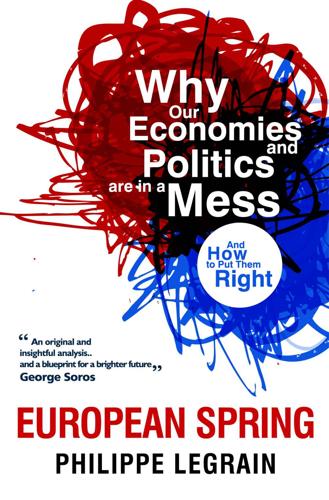
European Spring: Why Our Economies and Politics Are in a Mess - and How to Put Them Right
by
Philippe Legrain
Published 22 Apr 2014
In large part, this is the flipside of the banking problem – many of the debts are in the form of bank loans or bonds owned by banks; banks are loath to recognise losses; regulators are reluctant to force them. But some of the debts are owed to other financial players, such as hedge funds, and investors, such as pension funds and insurance companies. This debt overhang is another big impediment to growth. Many households in countries that have suffered a housing bust – such as Spain, Ireland and the Netherlands – have mortgages that exceed the value of their property, as do some in depressed parts of Britain. So long as interest rates remain low, banks are willing to show forbearance and borrowers still have an income, they may be able to make the mortgage payments.
…
139 But it was predictable that massive austerity would plunge the economy into a much deeper recession than the programme assumed, causing debt to skyrocket as tax revenues collapsed, social spending soared and the economy shrank. It was also obvious that the return of “confidence” on which a private-sector investment boom – and hence a speedy recovery – was predicated wouldn’t happen in a depressed and hidebound economy with a broken banking system and a huge debt overhang. The programme devised by the Troika – the European Commission, the ECB and the IMF, who together were put in charge of Greece’s destiny – forecast that the economy would shrink by 5½ per cent between 2009 and 2012; it actually slumped by 17 per cent. IMF officials were convinced that Greece was insolvent, but were overruled by their boss, Dominique Strauss Kahn, who had ambitions to be the next French president and did not want to confront the eurozone policy establishment or impose losses on French banks.
…
Yes, after a Greek restructuring, some banks would have needed recapitalising, but since markets were already pricing in a write-down, their balance sheets were impaired in any case. Last but not least, whereas investors didn’t know which banks were exposed to Lehman and so lost confidence in all of them, exposures to Greek debt were known after the first EU bank stress tests in 2009 and could have been publicised. Far from sparking panic, then, tackling the debt overhang could have reduced uncertainty and therefore stabilised markets.144 Eurozone policymakers’ handling of Greece was so inept that they spread panic rather than quelling it. Pretending that Greece was solvent didn’t fool investors. Claiming that “the need to safeguard financial stability in the euro area as a whole” required this pretence didn’t reassure investors; it terrified them.

Broken Markets: A User's Guide to the Post-Finance Economy
by
Kevin Mellyn
Published 18 Jun 2012
Under the terms of the current, somewhat naïve political debate, free-market advocates say that getting government off the back of business will allow us to grow our way out from beneath the debt overhang. The “progressive” view is that debt per se is not a problem if taxes are raised on the 1 percent, although they already carry 40 percent or more of the tax burden. As with many such political standoffs, everybody is wrong. The odds of the US economy growing out of our debt overhang are extremely long if past experience is any guide. Carmen Reinhart and Ken Rogoff studied centuries of financial crises—read their indispensible This Time Is Different (Princeton University Press, 2009) for the full picture—and found that public debt levels began to impede economic growth when they moved above 90 percent of GDP.
…
Broken Markets Raising—or Lowering—Taxes Has Little Impact On the other hand, tax cuts such as the payroll tax holiday have no impact on capital formation and savings, activities that are already discouraged by the tax code. Raising taxes on the “rich” would not make a real dent in the debt overhang—100 percent taxation at the top 1 percent would cover half of one year’s deficit—but would almost certainly discourage business investment. As the European crisis of today illustrates, as well as numerous debt crises in other countries that couldn’t just print money, if you can’t grow and tax your way out of a debt overhang, you are left with two options: default and austerity. Both are very ugly, as the riots in Europe and the public-sector union reaction to minor reforms in the United States should remind us.
…
Only the largest card businesses had the resources to build the required skills and infrastructure, and the larger the card portfolio, the more the law of large numbers spread costs and risks. As a result, the credit card industry became consolidated into a relatively few banks within a decade. As wholesale banking continued to lose ground to the capital markets, and as the largest banks were still trying to write off their sovereign debt overhang, the credit card business became the single most lucrative activity in US banking, which before the 1980s had left consumer credit to the retailers, consumer finance companies, and loan sharks. To a large extent, Wriston and his successor John Reed gave their bank the raw earning power to dig its way out from its sovereign debt problems through its bold and early drive into the card business.

Why Government Is the Problem
by
Milton Friedman
Published 1 Feb 1993
QUESTION: I think your work was very influential in convincing a lot of people that the roots of the inflation of the seventies were fighting the Vietnam War, making the Great Society, and doing it by creating money. In the 1980s, it looks as if we financed the cold war and continued the Great Society, but, instead of monetary financing, we did it with debt. How serious do you think the debt overhang is? FRIEDMAN: I do not believe the debt overhang is the real problem. I believe the real problem is government spending. Government debt is a problem in the long run. Obviously, if the government continues to run deficits for a long period of time, it will sooner or later have to monetize them. So I do not deny that is a real problem.

The Shifts and the Shocks: What We've Learned--And Have Still to Learn--From the Financial Crisis
by
Martin Wolf
Published 24 Nov 2015
It turned a vicious downward spiral of falling confidence into a virtuous upward spiral of rising confidence. Yet, while the spreads did indeed fall sharply, they remained significant (see Figures 6 and 7). For countries caught in a deflationary trap, these spreads might yet prove unmanageable. Moreover, the debt overhangs, high interest rates, banking-sector weakness and broken mechanisms for transmission of monetary policy, which are characteristic of all financial crises, inevitably led to deep recessions and high unemployment in the crisis-hit Eurozone countries. Furthermore, given their difficulty in borrowing and their lack of access to central-bank financing, the crisis-hit countries could not offset these deep recessions, indeed true depressions, with fiscal or monetary stimulus, at least without external support.
…
If it does move towards surplus, as has been the case, the rest of the world has to adjust via some combination of higher spending and lower output. If it is the latter, the Eurozone crisis is exported. A clash must also arise, within this low-inflation Eurozone, between improving competitiveness and managing the debt overhang. This is because a rapid restoration in competitiveness of countries like Italy or Spain requires falling wages and prices. But falling wages and prices also raise the real burden of debt. The relatively high interest rates on both private and public debt that characterize these economies make the problem of managing debt even harder.
…
When banks told shareholders they intended to earn 15 per cent returns on equity, they were telling them they intended to run a risky business. They were also, as we know, telling the truth. There is, however, one reason why high leverage might be attractive to shareholders, even in the absence of government guarantees: debt overhangs. In their important book on the perils of high bank leverage, professors Anat Admati of Stanford University and Martin Hellwig of the Max Planck Institute for Research on Collective Goods use the example of Kate, a woman who has borrowed $270,000 to buy a house for $300,000. Suppose she inherits $50,000 and uses that money to pay off part of her loan.

The Economics of Belonging: A Radical Plan to Win Back the Left Behind and Achieve Prosperity for All
by
Martin Sandbu
Published 15 Jun 2020
When a credit boom leaves a trail of underwater debtors or “zombie” companies that spend most of their revenue on servicing debt, even a solid government stimulus may struggle to spur increased spending and investment in those parts of the economy: the debt overhang constrains the private sector’s ability to respond to stimulus.3 But worse, a debt overhang may constrain governments too. A downturn inevitably increases budget deficits, partly for the good reason that a fiscal stimulus is the right policy in a downturn, and often for the more dubious reason that governments take responsibility for private debts by bailing them out.
…
As I explained in the previous chapter, unsustainable public debt (or lack of “fiscal space”) is usually a bad reason for restraining fiscal stimulus in a downturn, but there are cases in which there is no choice. Greece in 2009, like several other eurozone countries in the years that followed, found that its big public debt overhang scared away the markets so that it could not borrow money for its huge deficits without help from other governments.4 Instability, however, is only one of the ways in which excessive finance undermines an economy of belonging. Beyond worsening cyclical ups and downs, a badly regulated financial sector also chronically steers the economy in the wrong direction.
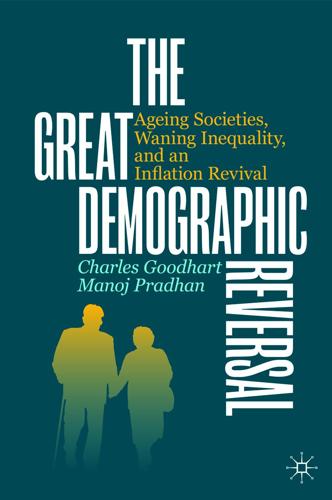
The Great Demographic Reversal: Ageing Societies, Waning Inequality, and an Inflation Revival
by
Charles Goodhart
and
Manoj Pradhan
Published 8 Aug 2020
Even though power and wealth have now become more broadly distributed towards human, financial and technological capital, land ownership remains a key index of one’s standing in society. Real estate also remains by far the economy’s largest asset—so large that it absorbs about 80% of bank credit in many countries, with such credit thereby raising housing and other real estate prices, adding to the economy’s debt overhang. Unlike other forms of wealth, land is fixed, not mobile. The disincentives arising from taxation in reduction of effort, transfer abroad, etc. that apply to most other forms of wealth tax do not apply to land. With a few exceptions (e.g. polders in Holland), land, unlike other forms of wealth, was not created by human labour.
…
The Equilibrium Real Funds Rate: Past, Present and Future (Natural Bureau of Economic Research, No. 21476). Heise, M. (2019). Inflation Targeting and Financial Stability: Monetary Policy Challenges for the Future. Cham, Switzerland: Springer. Kalemli-Özcan, S., Laeven, L., & Moreno, D. (2019, February). Debt Overhang, Rollover Risk, and Corporate Investment: Evidence from the European Crisis (European Central Bank Working Paper No. 2241). Laubach, T., & Williams, J. C. (2003, November). Measuring the Natural Rate of Interest. The Review of Economics and Statistics, 85(4), 1063–1070. Marx, M., Mojon, B., & Velde, F.
…
Life Below Zero: Bank Lending Under Negative Policy Rates. The Review of Financial Studies, 32(10), 3728–3761. Hudson, M. (2018). …and Forgive Them Their Debts: Lending, Foreclosure and Redemption from Bronze Age Finance to the Jubilee Year. Glashütte: ISLET-Verlag Dresden. Kalemli-Özcan, S., Laeven, L., & Moreno, D. (2019, February). Debt Overhang, Rollover Risk, and Corporate Investment: Evidence from the European Crisis (European Central Bank Working Paper No. 2241). Mian, A., & Sufi, A. (2014). House of Debt: How They (and You) Caused the Great Recession, and How We Can Prevent It from Happening Again. Chicago: University of Chicago Press.
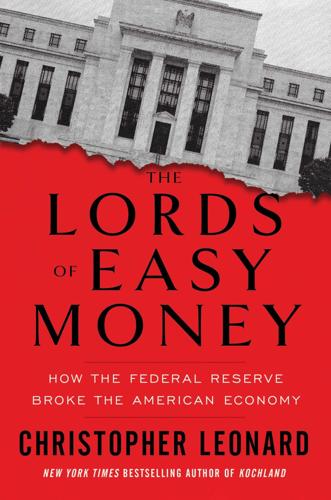
The Lords of Easy Money: How the Federal Reserve Broke the American Economy
by
Christopher Leonard
Published 11 Jan 2022
He guided the central bank to cut interest rates in the early 1990s, even though the economy was growing, which was the opposite of what the Fed should be doing according to the traditional models. In 1991, the Fed cut the short-term interest rate from a little more than 5 percent to just under 4 percent by early 1992, hoping to give the economy some sweet, palliative medicine that might counteract the debt overhang. But it quickly became clear that a lot more medicine was going to be necessary. Throughout 1992, the Fed cut rates steadily, meeting after meeting, bringing them all the way down to 2.9 percent at the end of the year. This emergency measure turned into something like the status quo. The Fed would keep rates around 3 percent until early 1994.
…
During the meeting in late July, about half of the voting FOMC meeting members expressed concerns about quantitative easing. Bernanke began to push hard against this opposition because economic growth remained weak, and the unemployment rate remained high, almost four years after the crash of 2008. This long period of anemic growth was entirely expected and predictable because of the big debt overhang that remained from the housing bubble, but Bernanke felt pressure to act and to keep the Federal Reserve at the center of efforts to boost the American economy. To achieve this, Bernanke pushed the Fed to use tools that were once considered experimental, even radical, but were now the only tools at the Fed’s disposal.
…
If Bernanke was slowly squeezing his own FOMC into a narrow set of choices, he justified what he was doing by pointing to two very large economic threats—one foreign and one domestic—that he believed justified his plan. The foreign threat came from Europe. The domestic threat came from Congress. In Europe, the financial crisis of 2008 had never really ended. The debt overhang in Europe was simply astounding. Just three European banks had taken on so much debt before 2008 that their balance sheets amounted to 17 percent of the entire world’s GDP. Europe was crippled for years. European banks and governments owed their debt in dollars, so the European Central Bank couldn’t just create more dollars to bail them out as the Fed had done in the United States.

The Euro and the Battle of Ideas
by
Markus K. Brunnermeier
,
Harold James
and
Jean-Pierre Landau
Published 3 Aug 2016
Hence, a rule that limits ex ante the debt buildup, like the Stability and Growth Pact, helps to maintain a good reputation. In addition, maintaining credibility might require a government, under certain circumstances, to first renege on its existing debt, thereby getting rid of its legacy debt and improving resilience to future shocks. This is, for example, the case if a country suffers from debt-overhang problems. Delegation to Independent Institutions and a Game of Chicken Another way to mitigate the time-inconsistency problem to which elected policy makers, especially before elections, succumb is via a clever institutional design. The above mentioned Glorious Revolution in 1688 England is one example of such an (self-committing) institutional arrangement.
…
When the present value of future tax revenues falls short of expenditures, the extra euro will be (partially) used up for paying off existing creditors rather than bridging a temporary funding gap. Without a default on existing debt, only tax increases, expenditure cuts, or growth-enhancing structural reforms can make the country solvent again. Defaulting on debt can free a country from its payment obligations and in so doing return it to solvency. Excessive debt levels cause a debt overhang problem. New investors are reluctant to provide additional funds, even if investments are profitable, because they know that, in case of success, a large fraction of the returns will accrue to existing legacy bondholders. FIGURE 7.1. Greek Nominal Government Debt and GDP Level (Source: Eurostat) Many German observers saw Greek public finances early on as a solvency problem and demanded debt restructuring already in the summer of 2010.
…
The pure existence of the big bazooka would reassure investors. Crossing the Rubicon via Default Determining whether the underlying problem is a liquidity or solvency problem is challenging. If one ignores a liquidity problem and does not provide extra funding, it can morph into a solvency problem. If one delays fixing a solvency problem, debt-overhang problems become more costly, and taxpayers will be worse off. Even worse, delay changes expectations about future behavior and might sow the seeds for the next crisis. There are also differences about how various remedies work. For example, outright default and quasi-default via inflation work out differently.
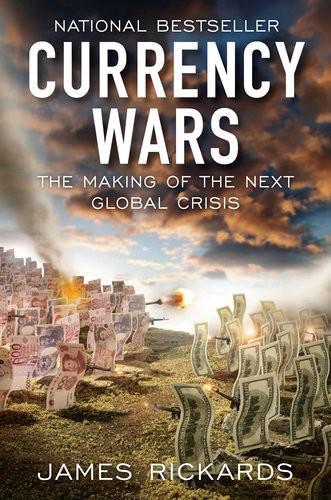
Currency Wars: The Making of the Next Gobal Crisis
by
James Rickards
Published 10 Nov 2011
In short, there is nothing about the post-1947 period of so-called hard economic science to suggest that it has had any success in mitigating the classic problems of boom and bust. In fact, there is much evidence to suggest that the modern practice of economics has left society worse off when one considers government deficit spending, the debt overhang, rising income inequality and the armies of long-term unemployed. Recent failures have stripped economists of their immunity from rigorous scrutiny by average citizens. What works and what does not in economics is no longer just a matter of academic debate when forty-four million Americans are on food stamps.
…
With this example of how complex systems operate and how vulnerable the dollar may be to a loss of confidence, we can now look to the front lines of the currency war to see how these theoretical constructs might manifest in the real world. The history of Currency Wars I and II shows that currency wars are last-ditch responses to much larger macroeconomic problems. Over the past one hundred years, those problems have involved excessive and unpayable debts. Today, for the third time in a century, the debt overhang is choking growth and inciting currency war, and the problem is global. Europe’s sovereign borrowers and banks are in worse shape than those in America. Housing booms in Ireland, Spain and elsewhere were as reckless as the boom in the United States. Even China, which has enjoyed relatively strong growth and large trade surpluses in recent years, has an overleveraged shadow banking system run by provincial authorities, a massively expanding money supply and a housing bubble that could burst at any moment.
…
The post-2010 world may be different in many ways from the 1920s and the 1970s, but the massive overhang of unpayable, unsustainable debt is producing the same dynamic of deleveraging and deflation by the private sector offset by efforts at inflation and devaluation by governments. The fact that these policies of inflation and devaluation have led to economic debacles in the past does not stop them from being tried again. What are the prospects for avoiding these adverse outcomes? How might the global debt overhang be reduced in a way that could encourage growth? Some analysts posit that the political struggle on government spending is just posturing and that once matters become urgent and key elections are over sober minds will sit down and do the right thing. Others rely on highly debatable projections of growth, interest rates, unemployment and other key factors to put deficits on a glide path to sustainability.

The Corruption of Capitalism: Why Rentiers Thrive and Work Does Not Pay
by
Guy Standing
Published 13 Jul 2016
All of these countries saw their economies nosedive, with rocketing unemployment, poverty rates and homelessness. Debt became more deeply ingrained. Rising debt is associated with subsequent falls in output and a permanent reduction in potential growth.11 This is because ‘debt overhang’ – excessive debt – comes to dominate the decisions of governments, corporations and households in ways that make it harder to reduce debt without economic and social pain. Ominously, the world faces a global debt overhang, with the USA, China and Eurozone countries all struggling with excessive debt. Orthodox responses to excess credit expansion hold out little prospect of lasting success. Requiring banks to hold more reserves or tighten lending criteria is likely to accelerate the shift to less regulated non-bank intermediaries such as the peer-to-peer platform lenders discussed later in this chapter.
…
W. 1, 2 buy-to-let mortgages 1, 2 Cadbury 1 Calmard, Pierre 1 Cameron, David 1, 2, 3, 4, 5, 6 Campaign for Better Transport 1 Cancer Fund of America 1 CAP (Common Agricultural Policy) 1, 2 Capita 1 Capital in the Twenty-First Century 1, 2 Care UK 1 Carlyle Group 1 Carlyle, Thomas 1 Carnegie Institute 1 Carney, Mark 1, 2 Cato Institute 1 Caxton Associates 1 Cerberus 1, 2 CERN (European Organization for Nuclear Research) 1 CETA (Comprehensive Economic and Trade Agreement) 1 charities/charitable donations 1, 2 Charter of Liberties (1215) 1, 2 Charter of the Forest (1217) 1, 2, 3, 4 Chen, Edward 1 Chernukhin, Vladimir 1 Cheshire, Sir Ian 1 Chicago school 1, 2 China Investment Corp. 1 Christensen, Clayton 1 churches 1 circuits of power 1 Citizens Advice 1 Citizens for Tax Justice 1, 2 Citizens UK 1 Citizens United 1 civil commons 1 Clare, John 1 Clickworker 1 climate change 1, 2, 3, 4 Clinton, Bill 1, 2, 3 Clinton, Hillary 1, 2, 3, 4 cloud labour 1 ‘cognitive capitalism’ 1 Coke, Edward 1 collective bargaining 1, 2, 3 Commissioning Support Industry Group 1 commodification 1, 2, 3, 4, 5, 6, 7, 8, 9, 10, 11, 12 Commodity Futures Trading Commission 1 commons 1 and allotments 1 civil commons 1 commodification of 1, 2, 3, 4, 5, 6, 7, 8, 9 and ‘contrived scarcity’ 1, 2, 3 cultural commons 1 and enclosure 1, 2, 3 and Hartwick’s Rule 1, 2, 3, 4 intellectual commons 1 and Lauderdale Paradox 1 and neo-liberalism 1, 2, 3, 4, 5, 6, 7 and precariat 1, 2, 3, 4, 5 revolt of 1, 2, 3, 4, 5 and privatisation 1, 2, 3, 4, 5, 6, 7, 8, 9 social commons 1 spatial commons 1, 2 and universal justice 1 Commons Act (1876) 1 Commons Preservation Society 1 comparative advantage 1, 2 Competition and Markets Authority 1 ‘competitiveness’ concept 1, 2, 3, 4, 5, 6, 7 ‘concierge’ economy 1 Congressional Budget Office (US) 1 Constitution (US) 1 ‘contrived scarcity’ 1, 2, 3, 4, 5 copyright 1, 2 Copyright Act (US, 1790) 1 Corbyn, Jeremy 1 Corporate Europe Observatory 1 corporate welfare 1 corporation tax 1, 2, 3, 4, 5, 6, 7, 8, 9, 10 Couchsurfing 1 Coulson, Andy 1 County Smallholdings Estate 1 ‘credentialism’ 1 ‘creditocracy’ 1 Crime and Disorder Act (1998) 1 ‘crony capitalism’ 1, 2, 3, 4, 5 Crosby, Lynton 1, 2 Crowdcube 1 CrowdFlower 1, 2, 3 crowdfunding 1, 2 crowd-sourcing 1 ‘crowdwork’ platforms 1 cultural commons 1 Cup Trust 1 Daily Mail 1, 2, 3 Daily Mirror 1 Daily Star 1 Daily Telegraph 1 Darling, Alistair 1 ‘data exclusivity’ 1 ‘deadweight effect’ 1 debt and austerity 1, 2, 3 and banking systems 1, 2, 3, 4, 5 cancellation of 1 as exploitation 1 household debt 1, 2, 3, 4 housing debt 1 and mental health 1 platform debt 1 and precariat 1, 2 and predatory creditors 1 public and private 1, 2 and rentier capitalism 1, 2, 3, 4, 5, 6, 7 and securitisation 1, 2 and social policy 1 student debt 1, 2 and tax breaks 1 ‘debt overhang’ 1 deindustrialisation 1, 2, 3 democracy and banking systems 1, 2, 3, 4, 5, 6, 7 circuits of power 1 commodification of 1, 2 and education 1 and Goldman Sachs 1 lobbying 1, 2 and media 1, 2 and Mont Pelerin Society 1, 2 and neo-liberalism 1, 2, 3 party politics 1 and plutocracy 1, 2, 3, 4, 5 political consultancy 1 and precariat 1, 2 and privatisation 1 and rentier capitalism 1, 2, 3, 4, 5, 6, 7 and revolt of precariat 1, 2 ‘thinning’ of 1 Desmond, Paul 1 Didi Kuaidi 1 digital platforms see rentier platforms direct subsidies 1 Discipline and Punish 1 Disney 1, 2 ‘distress’ debt 1 Doha Round 1, 2 ‘Double Irish’ 1, 2 Draghi, Mario 1, 2, 3 Drutman, Lee 1 Dudley, William 1 Duncan Smith, Iain 1 Dutch Disease 1 ‘earnings stripping’ 1 Easton, Jim 1 easyCar Club 1 eBay 1 EBRD (European Bank for Reconstruction and Development) 1, 2 Economist, The 1, 2, 3, 4, 5, 6, 7, 8, 9 Ecosystem Markets Task Force 1 education 1, 2, 3, 4, 5, 6, 7 Edward I, King 1 Einaudi, Luigi 1 Einstein, Albert 1 EITC (Earned Income Tax Credit) 1 Electoral Commission 1, 2 Elizabeth II, Queen 1 Elsevier 1 enclosure 1, 2, 3 Encore Capital 1 ‘entrepreneurial’ debt 1 Equity Lifestyle Properties 1 Erhard, Ludwig 1 EU membership referendum (2016) 1, 2 European Central Bank (ECB) 1, 2, 3, 4, 5, 6 European Patent Office 1 ‘euthanasia’ of rentiers 1, 2, 3, 4, 5, 6, 7 Evening Standard 1 ‘ever-greening’ 1 exchange value 1, 2, 3 Facebook 1, 2 Faraday, Michael 1 Farmer, Michael 1 ‘Faustian bargain’ 1, 2, 3 FDA (Food and Drug Administration) 1 Federal Reserve 1, 2, 3, 4, 5, 6 Feinberg, Stephen 1 Financial Services Authority 1 Financial Times 1, 2, 3, 4, 5, 6, 7 Fisher, Sir Antony 1 Fitzgerald, F.

India's Long Road
by
Vijay Joshi
Published 21 Feb 2017
As a result, project approvals came to a standstill, and so did progress on economic reform. On top of all this, the government shot itself in the foot by undertaking various silly initiatives that sent the wrong signals, such as retrospective taxation of some foreign companies. It is not surprising that faced with these manifold governance issues, in addition to a debt overhang and yet another global slowdown from 2011, new investment dried up.29 Be that as it may, it is clear that the severe slowdown from 2011 had very little to do with ‘crowding out’ or the stance of monetary policy. The RBI misunderstood the nature of the slowdown and kept monetary policy loose despite the surge of inflation.
…
This is all to the good but the government’s emphasis on ‘ease of doing business’ should not obscure an obvious point: improving the business climate will also depend on making a success of other aspects of the reform process, such as rectifying infrastructure deficits and making factor markets function more smoothly. A more immediate problem is that an investment revival is being hampered by the debt overhang in large parts of the corporate sector and the impaired financial position of the public sector banks (PSBs). The former blunts the desire to invest and the demand for credit; the latter restricts the supply of credit. What is to be done? In a normally functioning economy, the banks would call the shots by forcing companies to repay loans or restructure/liquidate assets.
…
[ 308 ] The Future 309 THE MODI GOVERNMENT: OVERALL ASSESSMENT, TWO YEARS ON Overall, the Modi government’s economic performance has been mixed at best. It has successfully stabilized the economy and moved firmly in the direction of inflation targeting. But it has not been able so far to re-ignite private investment in the face of the inherited debt overhang, and thereby return the economy to rapid growth. The economy is not showing signs of robust recovery, whatever the national accounts say. Of course, recovery will come sooner or later. This leads naturally to the question: is the Modi government doing enough to promote rapid, sustainable, and inclusive growth in the long term?
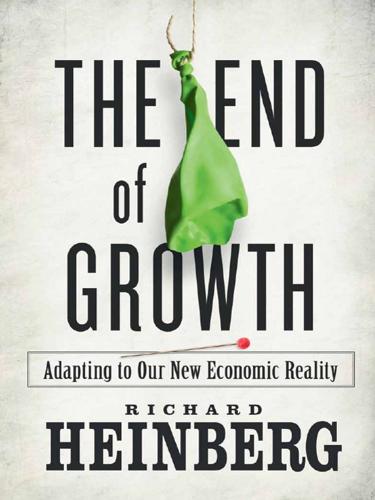
The End of Growth: Adapting to Our New Economic Reality
by
Richard Heinberg
Published 1 Jun 2011
However, this did not happen: because there was reduced demand for loans (companies didn’t want to expand in a recession and families didn’t want to take on more debt), the banks just sat on this extra capital. Perhaps a better result could have been obtained if the Fed were somehow to have distributed the same amount of money directly to debtors, rather than to banks, because then at least the money would either have circulated to pay for necessities, or helped to reduce the general debt overhang. But this would require actions far removed from the Fed’s mandate. In November 2010, the Fed again resorted to quantitative easing (“QE2”). This time, instead of purchasing mortgage securities, thus inflating banks’ balance sheets, the Fed set out to purchase Treasuries — $600 billion worth, in monthly installments lasting through June 2011.
…
In an economy of fixed size, where some enterprises are expanding while others are contracting, credit can play a useful but limited role. In a growing economy, credit finds and creates fabulous new opportunities. If credit expands to an unrealistic degree, or if a formerly growing economy enters a recession, the result can be a credit bubble or debt overhang, leading to widespread debt defaults and a dramatic contraction of credit. In a serious recession, the economy can suffer a powerful, overwhelmingly debilitating one-two punch. The first comes from the interruption of growth; this in itself dashes hopes and leads to increased unemployment and declining earnings.
…
Then, one simple way to administer the “haircut” would be to slice a decimal place off everyone’s debts, savings, and other accounts. If you had a $250,000 mortgage, it would be knocked down to $25,000 — but your $20,000 savings account would survive unscathed, as it fell below the $25,000 limit designed to protect pensioners and other low-income individuals. Your debt overhang would have shrunk from $230,000 to $5,000. A wealthy person who had gained $5 billion through investing in hedge funds would now have only $500 million. A business that owed $750,000 in loans would now owe $75,000. And so on. The net result would be a “re-set” in the relationship between claims and real assets, bringing that relationship back into a somewhat more workable balance.

The Irrational Economist: Making Decisions in a Dangerous World
by
Erwann Michel-Kerjan
and
Paul Slovic
Published 5 Jan 2010
The idea is to match the holding period for the capital with the long-term recurrence rates of the catastrophe risks. 11 Government bailouts of entire firms are particularly costly because they indemnify all the firm’s creditors—a version of the debt overhang issue from corporate finance. This inefficiency is reflected in all of the government’s subprime mortgage bailouts. I thank Ken Froot for emphasizing for me this application of the debt overhang issue. 12 See Jaffee (2009). Chapter 20 Froot: Toward Financial Stability 1 I modify markets with dealer-centric to indicate the many dealer-intermediated markets that exist, and to contrast them from exchange-centric markets. 2 The London Interbank Offered Rate (LIBOR) is a daily reference rate based on the interest rates at which banks borrow funds from other banks in the London wholesale money market (or interbank market).
…
One factor is that unexpected losses bring into question whether the proper model is being used, so ambiguity aversion may be involved. Capital market imperfections provide another set of factors. In particular, investors may be unwilling to provide new capital for fear it will be used primarily to pay off existing losses, a form of the debt overhang problem from corporate finance. 4 See Kunreuther and Michel-Kerjan (2009) for an extended discussion. 5 TRIA has created provisions for the U.S. Treasury that allow it to recapture some of its expenditures by imposing surcharges on all property and casualty insurance policies in subsequent years.
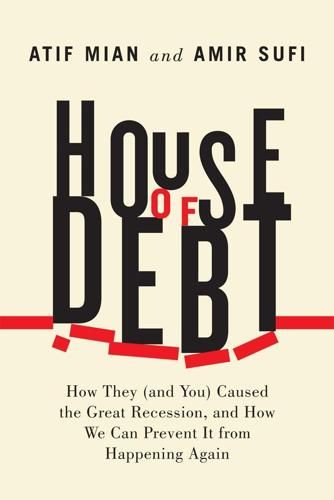
House of Debt: How They (And You) Caused the Great Recession, and How We Can Prevent It From Happening Again
by
Atif Mian
and
Amir Sufi
Published 11 May 2014
Her analysis found that “highly leveraged homeowners had larger declines in spending between 2007 and 2009 than other homeowners, despite having smaller changes in net worth, suggesting that their leverage weighed on consumption above and beyond what would have been predicted by wealth effects alone.” Karen Dynan, “Is a Household Debt Overhang Holding Back Consumption?” Brookings Papers on Economic Activity (Spring 2012): 299–344. Chapter Four 1. Hal Varian interviews from two sources: Holly Finn, “Lunch with Hal,” Google Think Quarterly, March 2011, http://www.thinkwithgoogle.co.uk/quarterly/data/hal-varian-treating-data-obesity.html; and McKinsey & Company, “Hal Varian on How the Web Challenges Managers,” McKinsey Quarterly, January 2009, http://www.mckinsey.com/insights/innovation/hal_varian_on_how_the_web_challenges_managers. 2.
…
See Center on Budget and Policy Priorities, “Where Do Federal Tax Revenues Come From?” April 12, 2013, http://www.cbpp.org/cms/?fa=view&id=3822. 21. Hans-Werner Sinn, “Why Berlin Is Balking on a Bailout,” New York Times, June 12, 2012. 22. Atif Mian, Amir Sufi, and Francesco Trebbi, “Resolving Debt Overhang: Political Constraints in the Aftermath of Financial Crises,” American Economic Journal: Macroeconomics, forthcoming. 23. Ibid. 24. These are financial crises defined by Carmen Reinhart and Ken Rogoff. Chapter Twelve 1. See Heidi Shierholz, Natalie Sabadish, and Nicholas Finio, “The Class of 2013: Young Graduates Still Face Dim Job Prospects,” Economic Policy Institute Briefing Paper 360 (2013): 1–30. 2.

A Game as Old as Empire: The Secret World of Economic Hit Men and the Web of Global Corruption
by
Steven Hiatt; John Perkins
Published 1 Jan 2006
Treasury, introduced a more aggressive debt-swap plan in March 1989. The key motivator was not generosity. In February 1987, Brazil had introduced a moratorium on interest payments, which had threatened to create a dangerous precedent. Brazil’s move was followed by Mexico’s rigged presidential election in mid-1988. Mexico’s huge debt overhang, declining oil prices, the potential for political instability in Mexico, and Brazil’s moratorium all suggested that much more widespread debt defaults might occur unless more aggressive debt-relief measures were taken by the First World. Under Brady’s plan, which was first implemented by Mexico in July 1989, private foreign banks agreed to swap their loans at 30 to 35 percent discounts for a menu of new bonds, whose interest and principal were secured by bonds issued by the U.S.
…
By 1992, it was three times the 1980 level and more than a third above the 1986 level.39 Finally, from 1985 on, private bank lending to low-income countries had been greatly exceeded by development bank lending—another indication of “market failure.” One of the first senior officials to recognize the need for more focus on low-income country debt was Nigel Lawson, the Conservative UK chancellor of the exchequer. In 1987 he proposed that the Paris Club refocus its negotiations with debtor countries on trying to reduce their “debt overhang,” as measured by the present value of expected future debt-service payments. This was a striking contrast to conventional debt relief, where the goal of rescheduling had always been to avoid write-downs and to preserve the loans’ present value by stretching out repayment. As noted earlier, that approach assumed that the key problem was illiquidity and that the nasty random shocks that had created the crisis would soon reverse themselves.
…
As noted earlier, that approach assumed that the key problem was illiquidity and that the nasty random shocks that had created the crisis would soon reverse themselves. As Lawson and others had come to recognize, these shocks were systemic, not random, and in the absence of serious intervention the “debt overhang” might well be permanent. Lawson launched the Paris Club on a prolonged series of debt restructurings. In the next decade the group conducted ninety bilateral restructurings with seventy-three countries, on increasingly generous terms.40 By 1998, this effort—supplemented by assistance from the World Bank’s International Development Association Debt Facility for debt swaps—had produced another $95 billion of debt relief.
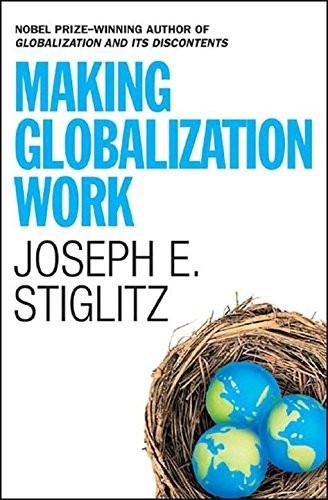
Making Globalization Work
by
Joseph E. Stiglitz
Published 16 Sep 2006
At the 2005 G-8 summit, held in Gleneagles, Scotland, the leaders of the advanced industrial countries agreed to write off completely the debt owed to the IMF and the World Bank by the poorest eighteen countries of the world, fourteen of which are in Africa.9 Even after two previous attempts at debt reduction, many developing countries still have an enormous debt overhang. As I write this, the world’s developing countries owe roughly $1.5 trillion to creditors including international banks, the IMF, and the World Bank. Approximately one-third of that is owed by low-income countries.10 And in spite of debt forgiveness, the level of indebtedness by low-income countries has continued to increase.
…
Had Argentina not defaulted on its debt, Argentineans would still be paying down the loans that financed the “dirty war” from 1976 to 1983, in which an estimated 10,000 to 30,000 Argentineans disappeared. There is a simple solution to the problem of odious debt: there should be a presumption that these countries should not repay the loans. This simple solution not only solves the problem of the current debt overhang but also of its recurrence: if creditors are on notice that if they lend to such regimes they risk not being repaid, then they will be unlikely to lend. “Credit sanctions” are likely to be much more effective than trade sanctions (where the international community tries to get countries to behave “well” by threatening to cut off trade).
…
Clearer guidelines on the circumstances in which debt would be forgiven would have two effects. The process of debt restructuring would be smoothed and be less expensive, reducing the chances of a costly crisis such as that which afflicted Argentina, and with costs contained, countries would more willingly go to court to have their debts restructured. The long periods in which debt overhang slows growth and impedes development might be shortened. At the same time, incentives for lenders would be strengthened: they would be put on notice to lend more carefully. Greater caution in lending might lead to lower growth in the short run, but the long-run benefits would be enormous. The crises that have plagued developing countries would not be eliminated, but their frequency and magnitude would be reduced.
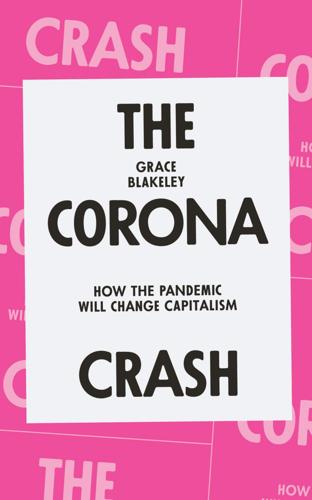
The Corona Crash: How the Pandemic Will Change Capitalism
by
Grace Blakeley
Published 14 Oct 2020
The increase in private debt in the West ultimately dragged down its investment and consumption, too. Here the destructive and senseless logic of austerity in the UK and the Eurozone added to the malaise. In the gap between a weak real economy and roaring asset markets there emerged a mountain of debt. The global economy was facing a debt overhang (around $244 trillion) many times larger than that which preceded the financial crisis.50 Corporate debt, particularly in the US and the UK, ballooned because of QE and low interest rates. Along with the increase in debt, the continued increase in asset prices driven by quantitative easing exacerbated pre-existing inequalities and generated a reaction against globalisation that threatened to bring the whole system crumbling down.

The Age of Stagnation: Why Perpetual Growth Is Unattainable and the Global Economy Is in Peril
by
Satyajit Das
Published 9 Feb 2016
Growth and improvements in living standards will slow significantly. For “shock value,” economist Robert Gordon speculates that future US growth rates, adjusted for his six headwinds (demographics, declining educational attainments, rising inequality, the effects of globalization, environmental costs, and the debt overhang) may be 0.2 percent, well below even the modest 1.8 percent of 1987–2007. Low or no growth is not necessarily a problem. In nature, growth is only a temporary phase, which ceases at maturity. Low economic growth may have positive effects on the environment and the conservation of scarce resources.
…
Excessive indebtedness also has long-term implications for growth, especially the recovery of consumption levels. The GFC has left a legacy of large debts, forcing households to reduce spending so as to repay borrowings, with low-income households reducing spending by twice as much as richer households. The debt overhang and caution about borrowing have reduced the impact of low interest rates. Households are unwilling or unable to increase debt. The fall in house prices in some countries, and the resulting decline in household wealth, has made borrowing difficult; lending against home equity has decreased. Banks have also tightened lending standards, in response to loan losses.
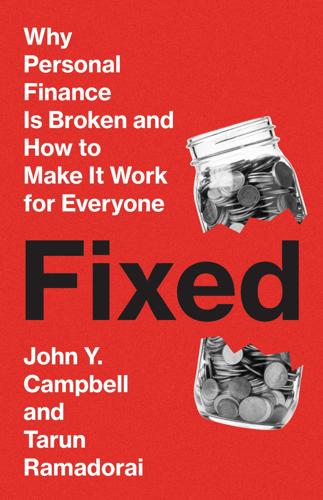
Fixed: Why Personal Finance is Broken and How to Make it Work for Everyone
by
John Y. Campbell
and
Tarun Ramadorai
Published 25 Jul 2025
Julia Fonseca and Lu Liu, “Mortgage lock-in, mobility, and labor reallocation,” Journal of Finance 79 (2024): 3729–3772. 49. One reason why this is true is that houses lose value when not properly maintained, and homeowners in financial distress often skimp on maintenance, lowering the value of the home and making the debt even harder to pay off if the house is eventually foreclosed. See Brian T. Melzer, “Mortgage debt overhang: Reduced investment by homeowners at risk of default,” Journal of Finance 72 (2017): 575–612. 50. As we have noted, bankruptcy codes differ across countries in this regard. In Denmark, as in many other continental European countries, little relief is possible from mortgage debt. There is a Danish saying that “mortgages, not marriage, are till death do us part.”
…
Consumer Financial Protection Bureau, complaint 8596094, received March 21, 2024, https://www.consumerfinance.gov/data-research/consumer-complaints/search/detail/8596094. 39. Thomas Davidoff, “Can ‘high costs’ justify weak demand for the Home Equity Conversion Mortgage?,” Review of Financial Studies 28 (2015): 2364–2398. 40. Maintenance is important for sustaining the value of a home, but some homeowners fail to do it, as Brian T. Melzer, “Mortgage debt overhang: Reduced investment by homeowners at risk of default,” Journal of Finance 72 (2017): 575–612, points out. John Y. Campbell, Stefano Giglio, and Parag Pathak, “Forced sales and house prices,” American Economic Review 101 (2011): 2108–2131, find that houses sold upon the death of the homeowner fetch considerably lower prices than other houses, in part because of the urgency of the sale but probably in part also because of a history of poor maintenance. 41.
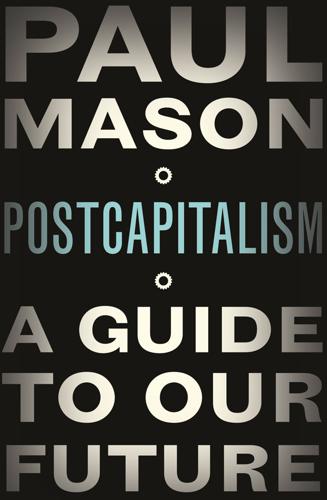
Postcapitalism: A Guide to Our Future
by
Paul Mason
Published 29 Jul 2015
The top level aims of a postcapitalist project should be to: Rapidly reduce carbon emissions so that the world has warmed by only two degrees Celsius by 2050, prevent an energy crisis and mitigate the chaos caused by climate events. Stabilize the finance system between now and 2050 by socializing it, so that ageing populations, climate change and the debt overhang do not combine to detonate a new boom-bust cycle and destroy the world economy. Deliver high levels of material prosperity and wellbeing to the majority of people, primarily by prioritizing information-rich technologies towards solving major social challenges, such as ill health, welfare dependency, sexual exploitation and poor education.
…
They are: Nationalize the central bank, setting it an explicit target for sustainable growth and an inflation target on the high side of the recent average. This would provide the tools to stimulate a socially just form of financial repression, aimed at a controlled write-down of the massive debt overhang. In a global economy made up of states, or currency blocs, this is going to cause antagonism but ultimately, as under Bretton Woods, if a systemic economy did it, other countries would have to follow suit. In addition to its classic functions – monetary policy and financial stability – a central bank should have a sustainability target: all decisions would be modelled against their climatic, demographic and social impacts.

EuroTragedy: A Drama in Nine Acts
by
Ashoka Mody
Published 7 May 2018
Surely, they understood that without restructuring its debt, the Greek government will remain overindebted and will ultimately be unable to repay its debts. 260 e u r o t r a g e d y Rather than causing panic, the restructuring would “reassure” investors that a fundamental underlying vulnerability was being addressed.136 Weber was stating a principle well known to historians and analysts of sovereign debt. When a country has a debt “overhang”—when there is no reasonable prospect that the government will be able to generate enough revenues to repay its debts—early restructuring to reduce the debt burden benefits not just the borrower but also the lender.137 Following the restructuring, the borrower’s economic health improves, and new productive opportunities open up for lenders to renew their business with the government and with the country’s residents.
…
The international media faithfully echoed dire predictions for Greece’s fate. Stripped of the drama, Syriza’s demand was simple: debt relief and less austerity. This demand had overwhelming support in both the scholarly economics literature and the practice of economic policy. Scholars for decades had emphasized that excessive debt—“debt overhang”—reduces the ability 414 e u r o t r a g e d y and incentive to invest, slows economic growth, causes lowflation or even deflation to set in, and makes debts harder to repay.91 Excessive austerity makes matters worse by further reducing economic growth and deepening deflation. On policy practice, legendary British economist John Maynard Keynes made the most famous statement on the wisdom of debt forgiveness.
…
“Greece: Third Review under the Stand- By Arrangement––Staff Report; Informational Annex; Press Release on the Executive Board Discussion; Statement by the Staff Representative on Greece; and Statement by the Executive Director for Greece.” IMF Country Report 11/68, Washington, D.C., March 16. https://www.imf.org/external/pubs/cat/ longres.aspx?sk=24708.0. International Monetary Fund. 2012a. “The Good, Bad, and Ugly: 100 Years of Dealing with Public Debt Overhangs.” “World Economic Outlook,” Washington, D.C., October. https://www.imf.org/external/pubs/ft/weo/ 2012/02. International Monetary Fund. 2012b. “Greece: Request for Extended Arrangement under the Extended Fund Facility—Staff Report; Staff Supplement; Press Release on the Executive Board Discussion; and Statement by the Executive Director for Greece.”
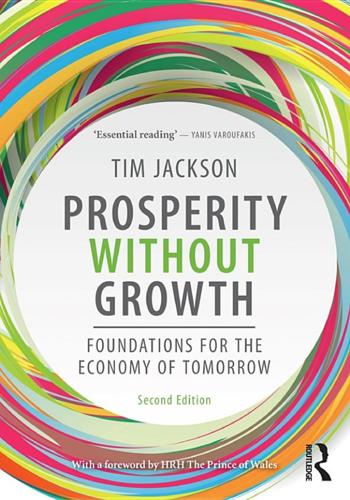
Prosperity Without Growth: Foundations for the Economy of Tomorrow
by
Tim Jackson
Published 8 Dec 2016
The best that can be hoped for here is that demand recovers and it’s possible to begin paying off the debt. This could take decades. It took Britain almost half a century to pay off public debts accumulated through the Second World War. The Institute for Fiscal Studies has estimated that the ‘debt overhang’ from the 2008 financial crisis could last into the 2030s.29 On the other hand, if the debt accumulates and the economy fails to recover, the country is doomed to bankruptcy. Crucially, there is little resilience within this system. Once the economy starts to falter, feedback mechanisms that had once contributed to expansion begin to work in the opposite direction, pushing the economy further into recession.30 With a growing (and ageing) population these dangers are exacerbated.
…
Binswanger, Mathias 2009. ‘Is there a growth imperative in capitalist economies? A circular flow perspective’. Journal of Post Keynesian Economics, 31: 707–727. Birch, Ray 2012. ‘US credit unions reach new record: $1 trillion in assets’. Credit Union Journal 16(15): 1, 26. BIS 2015. Secular Stagnation, Debt Overhang and Other Rationales for Sluggish Growth, Six Years on. BIS Working Paper 482. Geneva: Bank for International Settlements. Online at www.bis.org/publ/work482.pdf (accessed 4 November 2015). BIS 2011. Basel III: ‘A global regulatory framework for more resilient banks and banking systems. Basel Committee on Banking Supervision/Bank for International Settlements’.
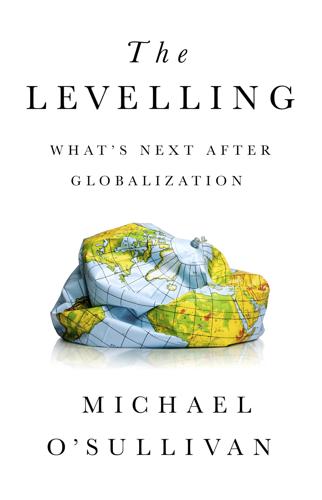
The Levelling: What’s Next After Globalization
by
Michael O’sullivan
Published 28 May 2019
China has so far avoided this by deft and at times aggressive tactical moves such as cutting capacity in heavy industries, attempting to balance growth and environmental demands in big cities, and shepherding the transition from a manufacturing to a services economy. However, defying the consequences of indebtedness is very difficult. A raft of research by the IMF makes clear that China does not, by Western standards, have the processes, rules, or frameworks in place for a large-scale treatment of its debt overhang.31 In one paper, the IMF staff poses the question, with regard to credit booms, “Is China Different?” And they answer with a stark no.32 In this context, China’s next recession will be a proper test of multipolarity in that it will show whether China deals with its credit crisis in a Chinese way or in a more orthodox Western way.
…
The eurozone crisis has seen the IMF contort itself in terms of the policies it considers appropriate for different types of indebted countries.14 To an extent, much of its role as a lender has been superseded by large central banks, development institutions, and private capital. Furthermore, the potential advent of an EU Treasury may further negate the need for the European Union to partner with the IMF on financial rescues. The next potential global financial accident spot, China, will probably not call on the IMF to resolve its debt overhang in a conventional manner; rather, it is likely to deal with a financial accident in its own way. Bring Back Bancor There may be scope for the IMF to maintain its relevance as a specialized debt-oversight institution. In that area, at least, one aspect of the IMF’s policy arsenal might still be useful.
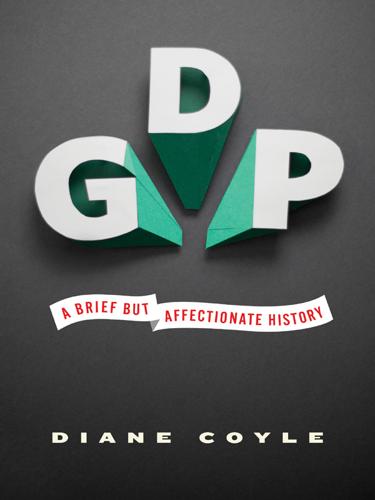
GDP: A Brief but Affectionate History
by
Diane Coyle
Published 23 Feb 2014
Not only does the easy part of catching up occur first, but China also has significant demographic and social challenges, with a rapidly aging population and excess of men due to the one-child policy, little provision of welfare and pensions at present, and possibly a period of political turbulence. It also has a debt overhang due to a real estate bubble. Even so, China has without a doubt arrived on the global stage as both a political and an economic force. China’s economic success has come about in large part through its integration into the flows of world trade and investment, its exports to the West and its overseas investments.

Sacred Economics: Money, Gift, and Society in the Age of Transition
by
Charles Eisenstein
Published 11 Jul 2011
As long as the borrower is still making payments, the lender can pretend that everything is normal. This is essentially the situation the world economy has occupied for the last several years. After years, or even decades, of interest rates far exceeding economic growth, with no compensatory rise in defaults, we face an enormous debt overhang. The government, at the behest of the financial industry (i.e., the creditors, the owners of money), has done its best to prevent defaults and keep the full value of the debts on the books, hoping that renewed economic growth will allow them to continue to be serviced.3 We will “grow our way out of debt,” they hope.
…
Yet the schools and training programs keep churning out new practitioners. Sooner or later, most of them will have to abandon the clients-and-sessions model and turn toward offering their skills as a gift.6 What is happening in these professions is starting to happen more generally. We might ascribe it to overcapacity, debt overhang, the “falling marginal return on investment,” or some other economic factor, but the fact is that the old profit model is in crisis. Like the holistic practitioners I described, collectively we will soon have no choice but to adopt a different model en masse. In the old economy, people pursued jobs and careers for the purpose of making a living.
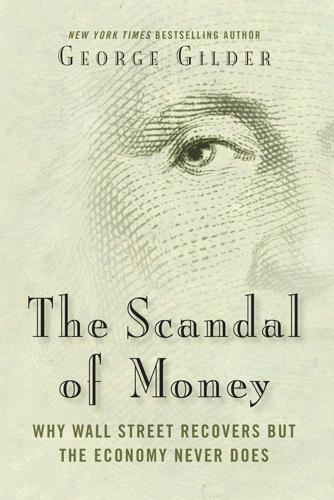
The Scandal of Money
by
George Gilder
Published 23 Feb 2016
The waning benefit from globalization suggests “sustainable technologies,” more appropriate dreams, and rich reparations for the third world. The headwind from global warming blows on balmy gatherings in tropical hotels where the industrial world confesses its sins and offers further reparations with 97 percent pure unanimity. Finally comes the debt overhang: well, it can be addressed by more money printing and devaluation and new progressive taxes on any savings and investments that survive the other headwinds. From Piketty’s new Marxism to Gordon’s declinism, the dismal science offers convenient excuses for the continuing failures of leftist economics.
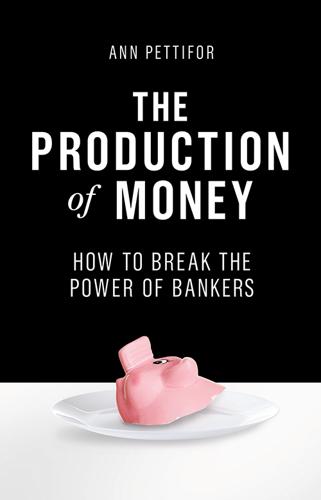
The Production of Money: How to Break the Power of Banks
by
Ann Pettifor
Published 27 Mar 2017
If the system is not managed, money lent at high rates of interest for largely speculative activity invariably results in burdens of unpayable debt, and in a vast overhang of private debt. This is especially so under conditions of ‘austerity’. Monetary reformers are right to argue that such private debt overhangs are wrong; socially, politically, morally and economically wrong. Which is why high real rates of interest, even when central bank rates are low, should be denounced, and the system reformed and managed to keep interest rates across the spectrum of lending low. Neglecting this important aspect of monetary theory and policy may be expected of classical and neoclassical economists who tend towards the interests of the wealthy, but it is disappointing in a civil society movement of monetary reformers seeking to fight a culture of recklessness and corruption.
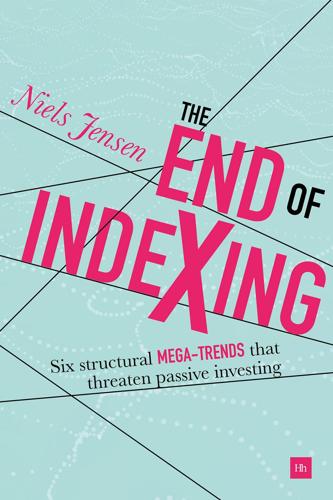
The End of Indexing: Six Structural Mega-Trends That Threaten Passive Investing
by
Niels Jensen
Published 25 Mar 2018
If the same amount of energy could be released gradually – in a controlled manner – we would have found the eternal solution to planet Earth’s energy requirements. We would have virtually unlimited access to cheap energy, and greenhouse gasses would be a thing of the past. There would be little nuclear waste, and productivity would rise dramatically across the world, effectively dealing with the debt overhang. These factors in combination would resolve some of the biggest challenges mankind is faced with today.90 Having said that, creating a controlled fusion reaction has proven very difficult. Because the nuclei have the same charge, they will electrically repel each other. To overcome the natural repulsion of the nuclei, you must give them sufficient energy.

China's Future
by
David Shambaugh
Published 11 Mar 2016
Semi-Democracy and Successful Reform If China were to embrace a transition to a Singapore-style democracy, it would permit all of the qualitative changes needed to transition from the old to the new growth and development model. Under this scenario, China escapes the Middle Income Trap (by innovating its way out), resolves its debt overhang problem and fixes its financial system, introduces greater competition and market forces throughout the economy, succeeds in the government’s urbanization scheme (see next chapter) and resolves the hukou dilemma, expands the service sector and household consumption, tackles corruption, cleans up the environment, fully taps factor endowments (land, labor, capital), becomes an innovative society, and achieves many other goals envisioned in the Third Plenum documents and the World Bank/State Council China 2030 report.
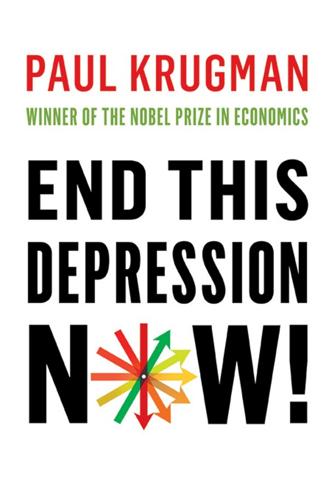
End This Depression Now!
by
Paul Krugman
Published 30 Apr 2012
Or to put it a bit differently (and the way Blanchard actually put it), if inflation had generally been around 4 instead of 2 percent before the crisis, short-term interest rates would have been around 7 percent instead of around 5, and the Fed would therefore have had that much more room to cut when crisis struck. Yet that isn’t the only reason higher inflation would be helpful. There’s also the debt overhang—the excessive private debt that set the stage for the Minsky moment and the slump that followed. Deflation, said Fisher, can depress the economy by raising the real value of debt. Inflation, conversely, can help by reducing that real value. Right now, markets seem to expect the U.S. price level to be around 8 percent higher in 2017 than it is today.
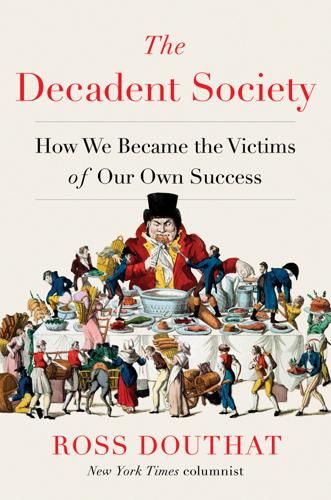
The Decadent Society: How We Became the Victims of Our Own Success
by
Ross Douthat
Published 25 Feb 2020
“dangerous” categorization of, 141–42 see also pink police state Civil Rights Act (1964), 77 Civil War, US, likelihood of second, 133–34 class war, 173 climate change, 35, 202, 219, 221 catastrophic, 192, 195–97, 200 as consequence of dynamism, 179–80 disproportionate effects in global south of, 174–75, 202 mass migration and, 196–97 sustainable decadence and, 173–75 Clinton, Bill, 71, 77 Closing of the American Mind, The (Bloom), 97 Coates, Ta-Nehisi, 97 Cold War, 181 colleges and universities: civil liberties and, 141–43 conflicting missions of, 142 cultural repetition in, 97–98 sex bureaucracy in, 142–43 Communism, fall of, 103, 112, 114, 162–63 Communist Manifesto, The (Marx and Engels), 219 Communist Party, Chinese, 139 communitarianism, religious, 216 communities, virtuous, 215–17 Confessions of a Born-Again Pagan (Kronman), 224 Congo, Civil War in, 199 Congress, US: abdication of policy making by, 75–76, 194 polarization of, 194 conservatives, conservatism, 206 apocalyptic thinking among, 98 birthrate and, 53 in congressional abdication of policy making, 75–76 cultural repetition and, 97–98 decadence of, 203 nostalgia of, 100 sclerosis as viewed by, 72–76 see also right Constitution, US, as not designed to cope with ideological polarization, 78 convergence, of Western and non-Western decadence, 165–69, 173 Coppola, Francis Ford, 95 Corbyn, Jeremy, 114 corporations, dearth of investment and innovation by, 26 Cortés, Hernán, 189, 190 cosmopolitanism, 206, 217, 218 counterculture, 2 Counter-Reformation, 222, 230 Cowen, Tyler, 12, 28, 33–34, 35, 45, 46 Crash of 1929, 194 credentialism, 35 crime rates, decrease in, 150 Crouchback, Guy (char.), 183 Crowley, Aleister, 231 Cuarón, Alfonso, 65–66 Culture of Narcissism, The (Lasch), 96 culture, repetition in, see repetition culture wars, 97–98 cummings, e. e., vii Days of Rage protests, 129 deBoer, Freddie, 145–46, 149 debt, national, 70 ratio of GDP to, 192, 193 debt, overhang of, 34 decadence, 10 aesthetic definition of, 6–7 author’s definition of, 8–10, 239 Barzun on, 8, 12, 69, 91, 96, 100, 113, 135, 172, 184 birthrate and, see birthrates, decline in convergence of, in West and non-Western world, 165–69, 173 economic, see stagnation, economic as ending in dystopia, 184–85 end of, see decadence, deaths of EU as case study in, 82–86 hope for renewal as possible under, 179 institutions and, 69 Islamic world and, 159 moral definition of, 7 and need for a Messiah, 237–39 opposition to, political and social risks of, 178–80, 182–83 policy limits imposed by, 87 political sclerosis as, see sclerosis, political possible inevitability of, 234–36, 240 repetition as, see repetition seductiveness of, 217 use of term, 6–7 decadence, deaths of, 115, 187–240 catastrophe as, see catastrophe divine intervention scenario for, 239–40 neo-medieval scenario for, 200–203 renaissance scenario for, see renaissance space travel scenario for, 236, 239–40 decadence, sustainable, 115, 117–85, 240 arguments in favor of, 177–85 authoritarian systems in, 137–54; see also pink police state benefits of, 180–82 climate change and, 173–75 comfortable numbness in, 119–36 as contradiction in terms, 179 dystopian elements of, 184–85 management of, 181–83 meritocracy in, 169–73 politics and, 129–36 pornography and, 119–22 prescription drugs and, 126–28 virtual entertainments and, 122–26, 128–29 Deep Throat (film), 119 Defense Department, US, UFO videos released by, 233–34 deficit, investment constrained by, 34 deficit spending, 192–93 DeLong, Brad, 192 Democracy in Europe Movement 2025 (DiEM25), 219 democratic norms, 68–69, 78, 163 Democrats, Democratic Party: 1960s–70s reform in, 77 Senate controlled by, 67 demographic change, weight of, 34, 56–58 religious renewal and, 222–23 stagnation and, 57 see also aging populations Deneen, Patrick, 215–17 Deng Xiaoping, 140 depression, among teenagers, 123 deregulation, 24 despair, declining birthrate and, 61–62 developed world: aging populations of, 34, 56–58, 60, 66 limits to growth in, 32–36 shrinking family size in, 59–60 developing world, emergence of decadence in, 165–69, 173 Didion, Joan, 110, 131 Discovery (space shuttle), 37 disease, spread of, 190–91 Disneyland, 37 dissent, marginalization of, 151–52 divine intervention, as scenario for end of decadence, 239–40 divorce rate, 51, 55 Dobson, James, 119, 120 “Dope Show, The” (music video), 140–41 dot-com bubble, 24 Douthat family, 59–60 Dreamland (Quinones), 127 drone warfare, 150 drugs, prescription: antidepressant, 126 increased use of, 126 opioid epidemic and, 126–27 social upheaval repressed by, 126–27 Dune (Herbert), 229 Dunham, Lena, 95 Durant, Will, 189, 202 Dworkin, Andrea, 120 Dylan, Bob, 110 dynamism, 25, 46, 58, 110 dangers of, 179–80 immigration and, 62, 64 nostalgia for, 206 Dyson, Freeman, 6 dystopias, 3, 47–50, 65–66, 94, 95, 122, 128, 144, 155–56, 179 economic catastrophe, 191–95, 200 economic stagnation, see stagnation, economic economy, declining birthrate and, 56–58 economy, US, deceleration of, 24 education: constraints on, 34–35 productivity and, 34–35 Ehrenreich, Barbara, 224 Ehrlich, Paul, 43 Eisenhower-era America, 2 elections, US: of 2008, 67 of 2016, 162, 182 Emanuel, Rahm, 67 Encyclopædia Britannica, 107 End of History and the Last Man, The (Fukuyama), 112–13 energy revolution, 210 Engels, Friedrich, 219 Enlightenment Now (Pinker), 165 entertainment, politics as, 153–54 entrepreneurship, declining rate of, 25–26 environment: constraints imposed by, 35 see also climate change Erdog˘an, Recep Tayyip, 163 Eurafrica, 198–200, 206–10, 218, 228–29 Christianity revitalized by, 207–8 euro, 82 destructive consequences of, 83–85 Europe, 197 aging population of, 198 economic stagnation in, 25 far right in, 85, 155, 162 left’s scenario for renaissance of, 219 mass migration to, 197–99, 200 nationalism in, 85, 172–73, 218 pink police state in, 143–44 populist resurgence in, 85 US economy vs., 166 US governmental system vs., 82, 83 European Union, 172–73, 217, 219 birthrate in, 50 centralization of authority in, 83, 84–85 financial crisis in, 84, 192 Muslim refugees in, 160 possible collapse of, 194 public distrust of government in, 83 sclerosis in, 82–86 unrealistic assumptions of, 82–83 Euro Tragedy: A Drama in Nine Acts (Mody), 84 evangelical Protestantism, 53, 101, 119, 222 Everlasting Man, The (Chesterton), 238–39 exhaustion, cultural and intellectual, decadence as, 9 expansionism, 3–4 environmental and social cost of, 5–6 exploration: abandonment of, 5–6 ideology of, 3–4, 231–32 Fake News, 153 families, shrinking of, 58–62 far left, 172, 194 far right, 134, 193, 194, 227 in Europe, 85, 155, 162 fascism, 112, 160, 194 feminism, 47, 51, 53, 54, 90, 97, 108, 120, 121, 156, 227 fiction, literary, declining sales of, 91 Fight Club (film), 113, 185 filibuster, 78 finance industry, see Wall Street financial crisis of 2008, 11, 69, 80, 84, 137, 192 Finland: decline of sexual relations in, 55 declining birthrate in, 52–53 Fire Next Time, The (Baldwin), 97 Flynn effect, 35 Flynt, Larry, 120 food production, climate change and, 195–96 Ford, John, 110 Foreign Policy, 133 Fox News, 77 France, 32 immigrants in, 64 pronatalist policies of, 52 protest movements in, 171, 172 Francis, Pope, 103 Freedom Time: Negritude, Decolonization, and the Future of the World (Wilder), 208 free-market policies, 25 free trade, 24, 28, 29 French Revolution, 206 From Dawn to Decadence (Barzun), 8 frontier: closing of, 5, 135 New, 181 space as, 2, 6, 231–32; see also Apollo moon program Turner on importance of, 3–4 Fukuyama, Francis, 12, 83, 112–13, 115, 135, 159 Fyre Festival, 17–18, 21 Game of Thrones (TV show), 95, 96 Garland, Merrick, 78 gay rights, revolution in, 99 gender, wage gap and, 99 genetic engineering, 11, 43, 211, 229, 230 Germany, 192 immigrants in, 64, 85 Germany, Nazi, 225 Germany, Weimar, 129, 131 Gersen, Jacob, 142 Gharbi, Musa al-, 97 Gibson, Mel, 189–90, 202 gig economy, decline of traditional freelancing in, 27 gilets-jaunes, 171 Gingrich, Newt, 77 globalism, 218 global South: climate change and, 174–75, 202 mass migration from, 208 global warming, see climate change God and Man at Yale (Buckley), 97 Goebbels, Joseph, 132 Gordon, Robert, 12, 33, 34, 35, 40–41, 46 government: informal norms of, 78 policy failures of, 71 public distrust of, 75 public expectation of action by, 74–75 uncontrolled sprawl of, 72, 76 Government’s End (Rauch), 72 Graeber, David, 12, 38, 40, 41 Gramsci, Antonio, vii Grantland, 93–94 Great Awakening, 103, 222, 228 Great Britain: Brexit in, see Brexit US technological mastery vs., 165 Great Depression, 30, 109 Great Filter, 234–36, 240 Great Recession, 11, 23, 27, 69, 114, 124, 193, 194 falling birthrate in, 51 Great Society, 77 Great Stagnation, The (Cowen), 33–34, 45 Greece, 84, 85 in 2008 financial crisis, 192 Green New Deal, 221 Green Revolution, 43, 196 growth, limits on, 32–36, 46 Guardian (Australia), 220 Guinea, 206 Habits of the Heart (Bellah et al.), 97 Handmaid’s Tale, The (Atwood), 47–50, 65 Handmaid’s Tale, The (TV show), 95 Hanson, Robin, 234 Harris, Mark, 93–94 Harris, Sam, 224 Hazony, Yoram, 218, 219 health care reform: interest groups and, 73 Obama and, 68, 69–70, 73–74, 76 Heavens and the Earth, The (McDougall), 2 Herbert, Frank, 229 Heterodox Academy, 97 Hinduism, 225 history: end of, 112–15, 135, 163, 177 return of, 129, 183, 195 viewed as morality play, 157 hive mind, 106–7 Holmes, Elizabeth, 18–19, 22 hookup culture, 121 horoscopes, 225 Houellebecq, Michel, 155–57, 159, 160–61, 172, 226, 227 House of Representatives, US, 68 “How the Wealth Was Won” (2019 paper), 26 Hubbard, L.
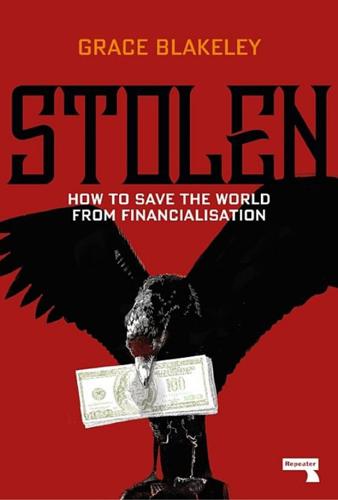
Stolen: How to Save the World From Financialisation
by
Grace Blakeley
Published 9 Sep 2019
Capital flows pushed up the value of their exchange rates, suppressing domestic demand by reducing the value of the last item in Keynes’ equation: net exports. Facing a highly uncompetitive exchange rate, the British and American trade deficits have risen to record heights. These political economic factors are what explains secular stagnation. The combination of a falling wage share of national income, a rising rentier share, and a private debt overhang has led to falling rates of consumption by households, feeding into lower investment by businesses — already constrained due to the rentier logic of shareholder value orientation. Together, these factors have created a severe problem of insufficient domestic demand, which has only been exacerbated by austerity in the UK.
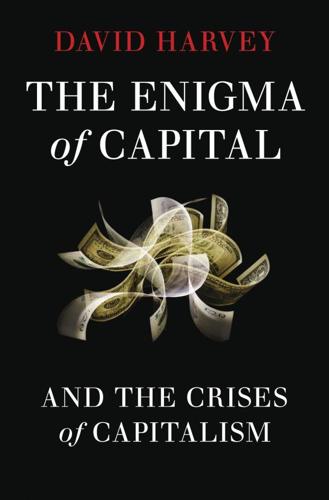
The Enigma of Capital: And the Crises of Capitalism
by
David Harvey
Published 1 Jan 2010
But this meant that finance should not be burdened by excessive regulation. The crash of the US financial sector in 2008–9 has jeopardised US hegemony. The ability of the US to launch a go-it-alone debt-financed recovery plan is limited politically by staunch conservative opposition at home as well as by the huge debt-overhang accumulated from the 1990s on. The US has been borrowing at the rate of around $2 billion a day for several years now and while the lenders – such as Chinese and other East Asian Central banks along with those of the Gulf States – have so far kept lending because the US economy is far too big to fail, the increasing power of the lenders over US policy is palpable.

Unelected Power: The Quest for Legitimacy in Central Banking and the Regulatory State
by
Paul Tucker
Published 21 Apr 2018
As confidence in the soundness of banks first ebbed in 2007 and then evaporated in the autumn of 2008, their balance sheets cratered, financial markets closed, and the supply of credit to households and firms in the real economy atrophied. The combination of a collapse in the financial system and in sentiment hit economic activity and jobs hard. This met with determined action by the world’s major central banks to ease monetary and credit conditions. But with a broken banking system, confidence weak, and a debt overhang in the household sector of some economies, the transmission of monetary policy into spending was impaired. For some students of twentieth-century monetary politics, this course of events would have confirmed the deep flaws they had long seen in the monetary constitution. James Buchanan, whom we first met in part II, advocated not only rules-based control of the supply of money but also a ban on leveraged private sector banking, which served no monetary purpose once an economy had migrated from a commodity (gold) standard to fiat money and so had autonomy in avoiding monetary shortages.
…
At a higher level, debates about hysteresis shade into an argument, expressed in the quote from Larry Summers at the chapter head, that the circumstances in which central bank independence was useful are behind us. Here it is held, variously, that the inflation problem was a quirk, albeit a serious one, of the 1970s; that the battle against inflation is now and enduringly won; and that today’s challenges of persistently low productivity growth and debt overhang could be met more effectively by having all macroeconomic policy instruments in one set of (political) hands, lifting artificial barriers to a joined-up monetary-fiscal strategy. An advocate might add that the political and even moral consequences of a world without growth are too grave for risks to be taken.9 The moment for fastidious adherence to separate spheres has passed, they would say, perhaps adding for effect that this is manifest in the Bank of Japan’s commitment to buy bonds on whatever scale is needed to hold down long-term yields as the economy recovers, placing it in the antechamber to debt monetization.
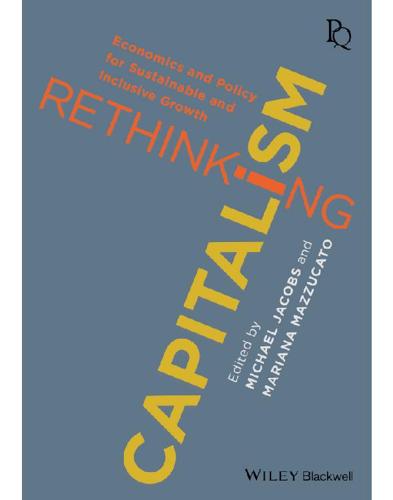
Rethinking Capitalism: Economics and Policy for Sustainable and Inclusive Growth
by
Michael Jacobs
and
Mariana Mazzucato
Published 31 Jul 2016
In practice, since overnight rates were already near to zero and longer-term rates were very low, QE was not able to lower rates much. However, were QE to work, it would do so almost entirely through private sector leverage, not through additional income or net wealth for the sector.20 And increasing private sector indebtedness is arguably not a desirable course of action in economies that continue to suffer from debt overhang. There is a way in which QE can create additional private sector income. If its scale is significant enough to push up the prices of the financial assets being purchased by the central bank, this would represent an increase in the private sector’s equity via a capital gain. When realised, this would generate income.

SUPERHUBS: How the Financial Elite and Their Networks Rule Our World
by
Sandra Navidi
Published 24 Jan 2017
Estimates of President Putin’s personal fortune range up to $200 billion.44 The Growth Premise: A Paradox? Our society and economy are predicated on growth as the engine for jobs, prosperity, and social stability. However, since the crisis, the recovery has been stubbornly slow and weak, as the world lacks demand, struggles with a huge debt overhang, and the political establishment procrastinates crucial structural reforms. Globalization has run out of steam, and central banks are trying to overcompensate for governmental inertia. The lack of growth exacerbates inequality even more and threatens social stability. But growth also comes with often overlooked costs and unintended consequences, such as the depletion of natural resources, exploitation of others, misallocation of human capital, and distortion of political systems.

Mine!: How the Hidden Rules of Ownership Control Our Lives
by
Michael A. Heller
and
James Salzman
Published 2 Mar 2021
Other credit card companies followed, setting up small South Dakota outposts with national reach. That’s why, to this day, you probably mail your credit card payment to a South Dakota P.O. box (or maybe to Nevada or Delaware, which gutted their usury laws to compete with South Dakota). Thus was born America’s trillion-dollar consumer debt overhang—debt that exceeds the future capacity to repay, and that blocks consumers’ ability to borrow more, even for their own worthwhile new projects. Building on this success, Janklow turned to lifting the cap on intergenerational wealth transfers. With a brief law—just nineteen words—he abolished the rule against perpetuities for assets nominally held in South Dakota trusts.

Stakeholder Capitalism: A Global Economy That Works for Progress, People and Planet
by
Klaus Schwab
Published 7 Jan 2021
In July 2019, it stood at 303 percent, according to an IIF estimate, and after the first few months of the COVID-19 crisis it ballooned to 317 percent.11 This is a dangerous trend because much of Chinese debt is owned by nonfinancial state-owned enterprises and local governments who may use debt to boost economic output in the short run. However, with marginal returns on public and private investments sharply decreasing in recent years, top-line economic growth is decelerating as a result, and the debt overhang is becoming increasingly concerning. Trade tensions, a decline in population growth, or other factors may trigger a further slowdown in growth. If that happens, a Chinese crisis may reverberate globally. Finally, while China led the world in installing new wind and solar facilities in the past few years, and President Xi at the UN General Assembly in September 2020 announced it wanted to achieve carbon neutrality before 2060,12 there are still some major hurdles left to get there.

Stakeholder Capitalism: A Global Economy That Works for Progress, People and Planet
by
Klaus Schwab
and
Peter Vanham
Published 27 Jan 2021
In July 2019, it stood at 303 percent, according to an IIF estimate, and after the first few months of the COVID-19 crisis it ballooned to 317 percent.11 This is a dangerous trend because much of Chinese debt is owned by nonfinancial state-owned enterprises and local governments who may use debt to boost economic output in the short run. However, with marginal returns on public and private investments sharply decreasing in recent years, top-line economic growth is decelerating as a result, and the debt overhang is becoming increasingly concerning. Trade tensions, a decline in population growth, or other factors may trigger a further slowdown in growth. If that happens, a Chinese crisis may reverberate globally. Finally, while China led the world in installing new wind and solar facilities in the past few years, and President Xi at the UN General Assembly in September 2020 announced it wanted to achieve carbon neutrality before 2060,12 there are still some major hurdles left to get there.

The Measure of Progress: Counting What Really Matters
by
Diane Coyle
Published 15 Apr 2025
With many possible contributory causes, the “productivity puzzle” is without doubt a genuine phenomenon, even though it raises significant measurement questions. Potential culprits include multiple economic shocks (the 2008 financial crisis, COVID, the R ussian invasion of Ukraine, inflation, Middle East conflict); debt overhangs from the financial crisis leaving unproductive zombie firms; reduced entry and increased concentration in many markets; high levels of income inequality; and ageing populations. There are also two possible, mutually exclusive causes that are a focus of debate in the academic literature on productivity: a substantive decline in the economic value of innovation and in the productivity of scientific research itself, or alternatively long lags in the adoption of new technologies before they deliver eco nomically valuable outputs.

Boom: Bubbles and the End of Stagnation
by
Byrne Hobart
and
Tobias Huber
Published 29 Oct 2024
Furthermore, older people have high health care costs and pension liabilities. 16 A higher-order effect of these trends, as we’ll detail later in this chapter, is a rising societal aversion to risk and a culture that is increasingly cautious and complacent. The second structural obstacle is a massive debt overhang, which is paralyzing the richer parts of the world. Coupled with demographic dynamics, massive social spending programs limit long-term investment in science, emerging technologies, and infrastructure. Third is the declining return on education, which is reflected in a high school graduation rate that increased from 6 percent to 70 percent over three generations.
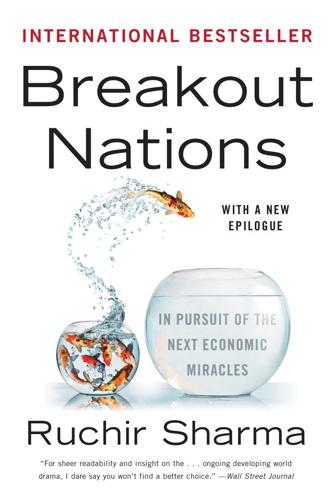
Breakout Nations: In Pursuit of the Next Economic Miracles
by
Ruchir Sharma
Published 8 Apr 2012
Most Westerners would say that China’s landmass is considerably larger than that of the United States, when in fact it’s so similar that geographers dispute which is bigger. China’s looming shadow is about to retreat to realistic dimensions. Over the next decade, growth in the United States, Europe, and Japan is likely to slow by a full percentage point compared to the post–World War II average, owing to the large debt overhang, but that slowdown will pale in comparison to a 3 to 4 percentage point slowdown in China. The big story will be that China is too big and too middle-aged to grow so fast. And as it starts buying less from other emerging nations, the average pace of growth in emerging markets is likely to slow from nearly 7 percent over the past decade to the 1950s and 1960s pace of around 5 percent.
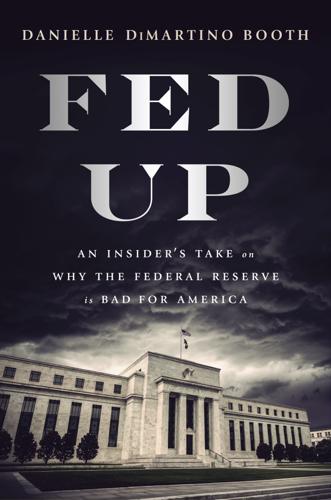
Fed Up: An Insider's Take on Why the Federal Reserve Is Bad for America
by
Danielle Dimartino Booth
Published 14 Feb 2017
“Household wealth has plummeted,” she said. “It fell more than $5 trillion in the fourth quarter alone. Unfortunately, households were not well positioned for such a shot to wealth. Instead, many had leveraged up to the hilt, and the combination of the dramatic loss in wealth and the massive household debt overhang portends years of subdued spending as households go through an extended period of deleveraging.” Skeptical aside: might this have had something to do with the housing bubble? “Despite our best efforts at using both traditional and nontraditional monetary tools, the stance of credit market conditions has only improved modestly,” Yellen said.

Britain's Europe: A Thousand Years of Conflict and Cooperation
by
Brendan Simms
Published 27 Apr 2016
For more than a decade now, analysts have traced the rise of the BRICS – Brazil, Russia, India and China – noting their surging GDPs, increasing confidence in International Organizations and mounting military expenditures.3 A fearsome array of statistics boosts these claims and predictions.4 Some foresaw a ‘new Asian hemisphere’.5 The west, by contrast, was held to be in precipitate decline.6 In the United States, the skies seemed to darken with chickens coming home to roost: there was imperial overstretch abroad, lack of investment and innovation at home. Manufacturing was crumbling. Educational standards were plummeting. The debt overhang crippled government, the banks and the private sector. In 2008, one analyst spoke of The Post-American World.7 Another suggested that, by 2020, China will even have overtaken the United States in the number of citations in international scientific papers.8 President Obama’s decisions to withdraw from Iraq and Afghanistan and his stated intention to concentrate on East Asia and the containment of China are seen as a belated realization of these facts.9 More abject still has been the alleged European decline.
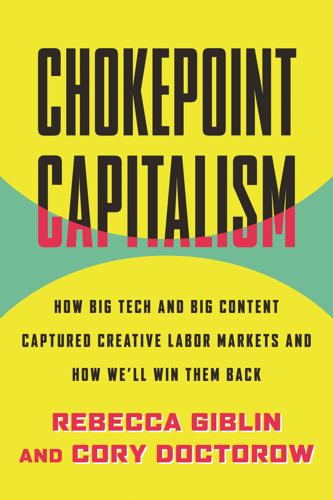
Chokepoint Capitalism
by
Rebecca Giblin
and
Cory Doctorow
Published 26 Sep 2022
Typically, about 70 percent of the purchase price comes from debt.13 Just a tiny fraction of the purchase price is put up by the general partners in the fund itself, with the remaining equity coming from outside investors. Typically, the leveraged company will try to buy competitors in an attempt to monopolize the industry, then use that power to squeeze suppliers, while simultaneously using their massive debt overhangs to squeeze workers and creditors as well. The idea is for the partners to exit after three to five years with a fat capital profit, having pocketed hefty advisory and management fees along the way. These deals are structured to give the fund an outsized return in the event the investment goes well and insulate them from the downside if it fails.

Hedgehogging
by
Barton Biggs
Published 3 Jan 2005
Each cycle ends with excessive capital equipment accumulation and increasing use of leverage for speculation, and a long period in which the excesses are purged by a secondary depression, a collapse of the capital goods sector, and a long period of stagnation. Stagnation tends to be characterized by protectionism (the 1816 tariffs, Smoot–Hawley) and a massive debt overhang. Accumulating physical depreciation then sets the stage for the next growth phase. In effect, as Forrester wrote, a major depression rebalances the economy, liquidates debt, and clears away the accumulated excesses. A Kondratieff pattern is discernible in the economic history of the United States.
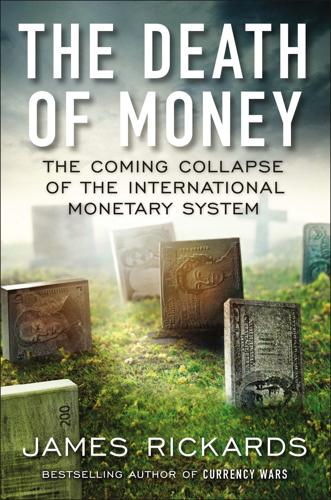
The Death of Money: The Coming Collapse of the International Monetary System
by
James Rickards
Published 7 Apr 2014
The new gold standard comes close to Mundell’s prescription that the optimal currency zone is the world, and it revives a version of Keynes’s vision at Bretton Woods before the United States insisted on dollar hegemony. Most profoundly, a new gold standard would address the three most important economic problems in the world today: the dollar’s decline, the debt overhang, and the scramble for gold. The U.S. Treasury and Federal Reserve have decided that a weak-dollar policy is the remedy for the lack of world growth. Their plan is to generate inflation, increase nominal aggregate demand, and rely on the United States to pull the global economy out of the ditch like a John Deere tractor hitched to a harvester up to its axles in mud.

The Billionaire Raj: A Journey Through India's New Gilded Age
by
James Crabtree
Published 2 Jul 2018
“The atmosphere was one in which the prime minister talked about unleashing the animal spirits,” as Jairam Ramesh put it to me. “But the animals became man-eaters.” At its most fundamental level “House of Debt” revealed that a crucial cog in India’s economy had broken. The conglomerates, the backbone of the industrial sector, found their biggest projects stuck. Hit with what economists call a debt overhang, they grew either unable or unwilling to invest again, plunging the wider infrastructure sector into recession. For all their vaunted aggression, the tycoons stumbled because they did not adapt to a significant change in India’s political economy. Many had come of age before liberalization, a time when capital was scarce but political problems were easy to negotiate.
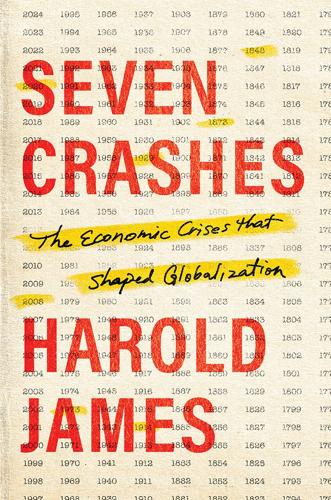
Seven Crashes: The Economic Crises That Shaped Globalization
by
Harold James
Published 15 Jan 2023
Potential borrowers who face significant costs of borrowing—consumers and small firms, for example, or firms with weak balance sheets—will see those costs rise and may thus be excluded from borrowing, or only be able to borrow on much harsher terms. As Bernanke and Gertler put it: “To the extent that negative shocks to the economy reduce the net worth of borrowers (or positive shocks increase net worth), the spending and production effects of the initial shock will be amplified.” The “debt overhang leads to the possibility of a low-output expectational equilibrium.”98 Sometimes it is helpful for noneconomists to imagine a practical example: a pharmacy in the Great Depression, such as that operated by Jonas Bernanke, would find it harder to borrow because the risk of bankruptcy was assessed higher by potential lenders.
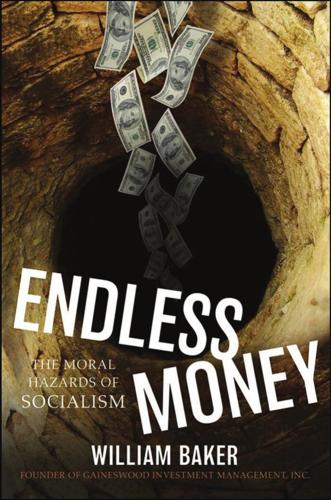
Endless Money: The Moral Hazards of Socialism
by
William Baker
and
Addison Wiggin
Published 2 Nov 2009
Liquidity became a focus of his attention, particularly in the mid-1930s, after it was apparent that one third of the “cheque-book money” had been destroyed by the waves of bank failures culminating in the bank holiday of 1933. He advised Roosevelt to scrap the gold standard and was an advocate of reflation as a way of cleansing the debt overhang and restoring the growth of credit.45 Fisher and Keynes enthusiastically endorsed experiments for reviving consumption and the velocity of money such as the distribution of “stamped money,” which had a requirement to be spent before an expiration date, and was tested in Howarden, Iowa, in 1932.

Who Stole the American Dream?
by
Hedrick Smith
Published 10 Sep 2012
While hailing the agreement as a step forward, President Obama commented: “No compensation, no amount of money, no measure of justice is enough to make it right for a family who’s had their piece of the American dream wrongly taken from them.” Waiting for the market to correct itself is no solution. Establishment bankers such as William C. Dudley, president of the Federal Reserve Bank of New York, assert that “the infrastructure of the residential mortgage market is wholly inadequate to deal” with the massive debt overhang and with getting real upward movement in home sales. Unless the government takes action, Dudley said, the housing market will “destroy much more value in housing than is necessary.” Smart economists have suggested multiple ways to break the housing logjam. Glenn Hubbard, former chief economic adviser to President George W.

The Alchemists: Three Central Bankers and a World on Fire
by
Neil Irwin
Published 4 Apr 2013
The most recent report on growth at the time had shown a 2.4 percent rate of expansion in the spring of 2010—in other words, right on that line where, if Bernanke’s tipping-point premise was correct, a little bit of a push in the right direction could go a long way. Yes, cheaper money might not help growth as much as it could without the counterinfluences of mortgage market dysfunction and debt overhang. But it could probably help on the margins. And if the Fed did squeeze private investors out of the Treasury bond market, he argued, they would have to put their money elsewhere, affecting the economy through what is known as the portfolio balance channel. They might buy corporate bonds, which would mean still more money available for companies looking to expand.

The Rise and Fall of Nations: Forces of Change in the Post-Crisis World
by
Ruchir Sharma
Published 5 Jun 2016
“LatAm Strategy—Interesting Charts.” HSBC Research, June 2014. Lansberg-Rodriguez, Daniel. “Latin America Is a Region Plagued by Incumbents.” Financial Times, October 15, 2014. Matekja, Mislav. “Europe Year Ahead 2013.” JP Morgan Research, December 3, 2012. Mian, Atif R., Amir Sufi, and Francesco Trebbi. “Resolving Debt Overhang: Political Constraints in the Aftermath of Financial Crisis.” National Bureau of Economic Research, Working Paper no. 17831, February 2012. Mithcell, Daniel. “Russia’s Flat Tax Miracle.” Heritage Foundation, March 2003. Mousavizadeh, Nader. “The Presence of Leadership.” New York Times, March 2, 2013.
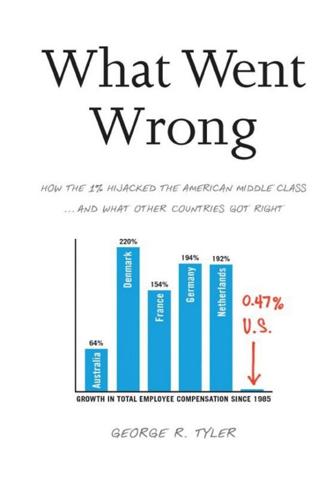
What Went Wrong: How the 1% Hijacked the American Middle Class . . . And What Other Countries Got Right
by
George R. Tyler
Published 15 Jul 2013
In August 2011, he published a more sobering update for NBER that projected even lower per capita growth rates in the future, likely just one percent for virtually all Americans. Gordon identified six causal factors responsible for weakening productivity and innovation, including rising college costs, sagging education performance, and the national debt overhang.61 This news is especially troubling, because Gordon’s research is emerging as a consensus. There are some more pessimistic forecasts, including one by economist Jeremy Grantham in November 2012.62 The Congressional Budget Office (CBO) is slightly more optimistic, but is convinced, like Gordon, that the weak Reagan-era outcome will persist.
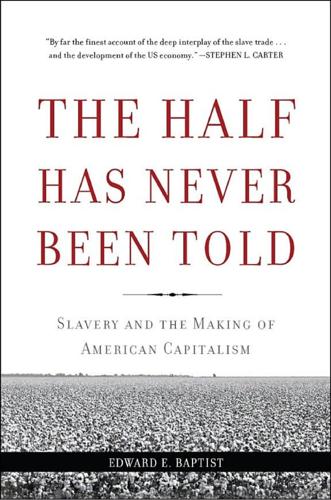
The Half Has Never Been Told: Slavery and the Making of American Capitalism
by
Edward E. Baptist
Published 24 Oct 2016
And the US Supreme Court delivered for Webster, Clay, and Ballard, rejecting slave-buyers’ claims that failure to enforce the state constitution gave them the right to cancel their debts by unilateral action.59 Image 8.3. The actual experience of the early 1840s on the cotton frontier was that of living through the clearing-out of the “debt overhang” built up during the boom years of the 1830s. Unceasing slave sales and forced movements were typical, like those depicted in this “Sale of Estates, Pictures and Slaves in the Rotunda, New Orleans,” in James Buckingham, The Slave States of America (London, 1842), vol. 1, facing title page. In the environment of intense popular democracy that had emerged during Jackson’s presidency, the next step may have been inevitable.
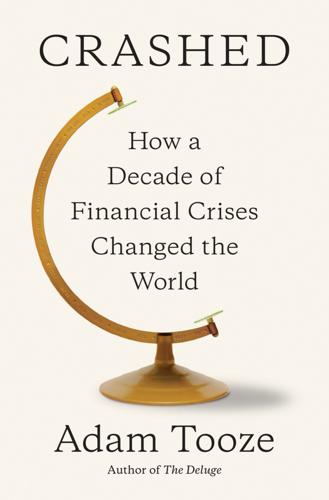
Crashed: How a Decade of Financial Crises Changed the World
by
Adam Tooze
Published 31 Jul 2018
East Europeans did not fail to notice that as a eurozone member, Greece seemed to be weathering the storm rather better than Hungary, even though its financial fundamentals were no better.43 In early 2009 there were calls, ironic in light of later events, for Poland and other East European EU members to be put on a fast track to eurozone membership, thus bringing them under the protective umbrella of the ECB.44 A confidential IMF staff report backed the proposal arguing that “[f]or countries in the EU, euro-isation offers the largest benefits in terms of resolving the foreign currency debt overhang [accumulation], removing uncertainty and restoring confidence. Without euro-isation, addressing the foreign debt currency overhang would require massive domestic retrenchment in some countries, against growing political resistance.”45 But no help was to be expected from the ECB. It had no interest in entangling itself in Eastern Europe.
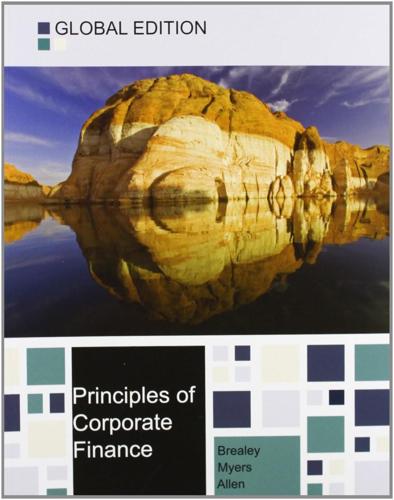
Principles of Corporate Finance
by
Richard A. Brealey
,
Stewart C. Myers
and
Franklin Allen
Published 15 Feb 2014
Dealer paper Commercial paper sold through a dealer rather than directly by the company. Death-spiral convertible Convertible bond exchangeable for shares with a specified market value. Debenture Unsecured bond. Debtor-in–possession financing (DIP financing) Debt issued by a company in Chapter 11 bankruptcy. Debt overhang Shareholder reluctance to provide more capital if the extra cash flows are largely used to pay off debtholders. Decision tree Method of representing alternative sequential decisions and the possible outcomes from these decisions. Defeasance Practice whereby the borrower sets aside cash or bonds sufficient to service the borrower’s debt.